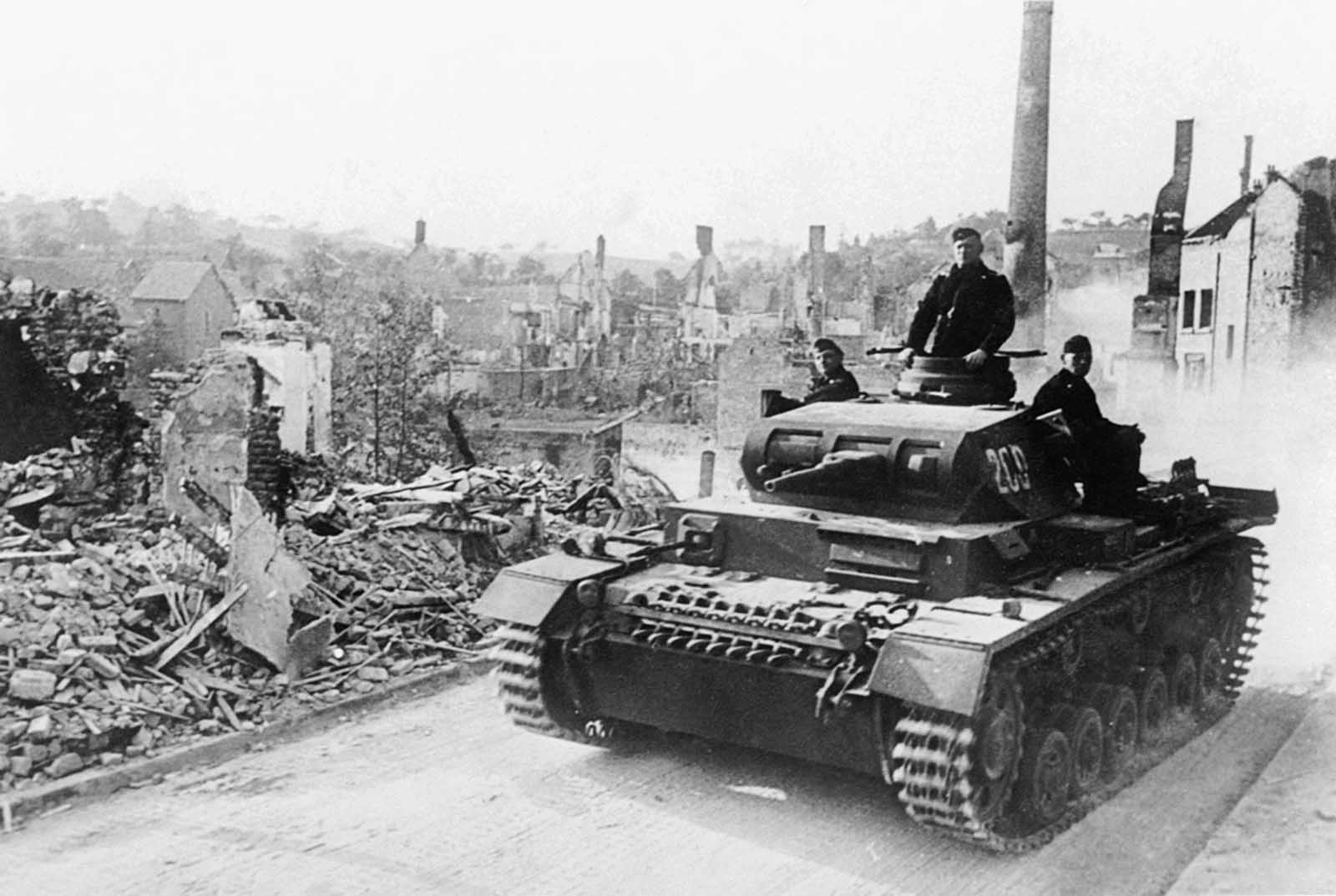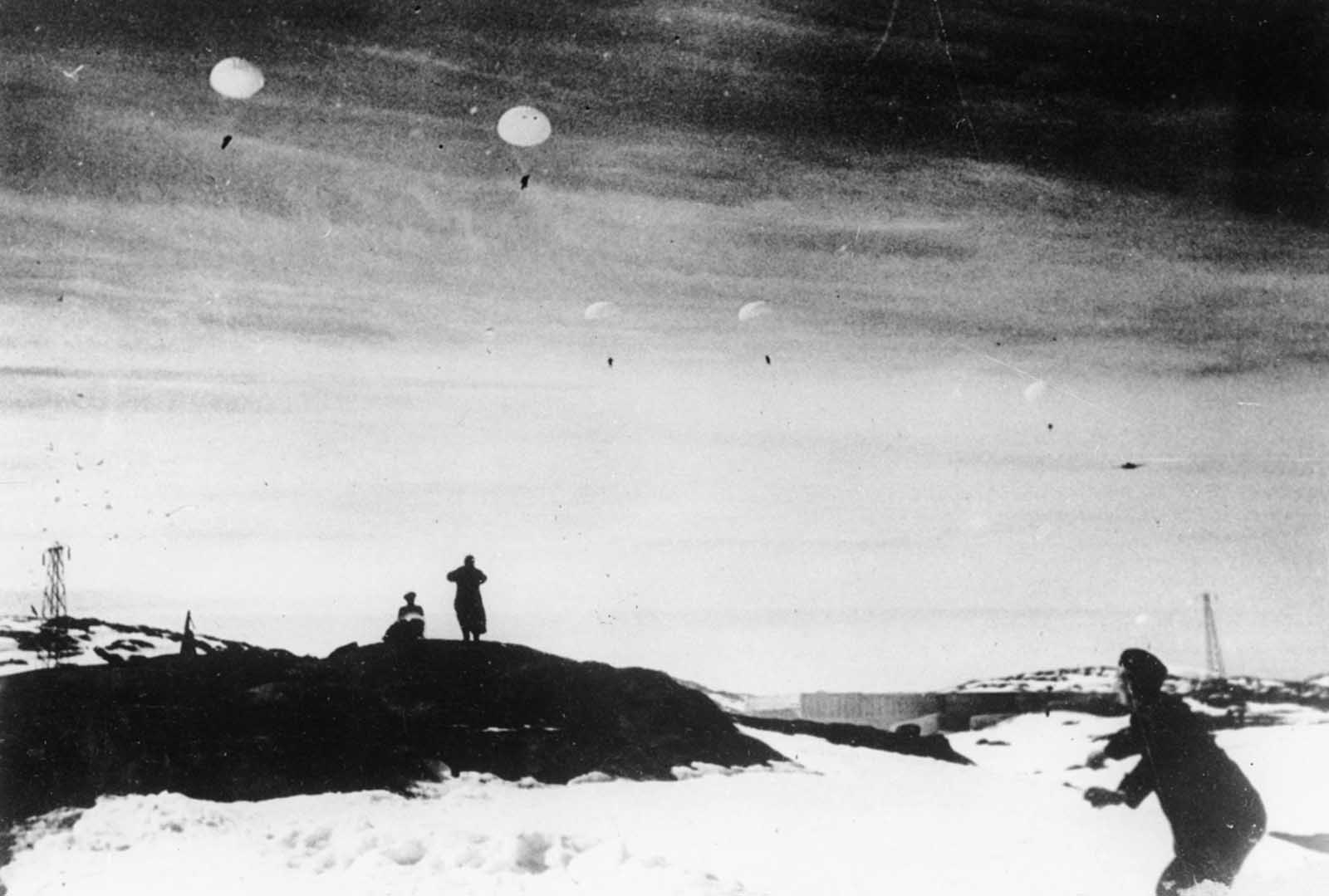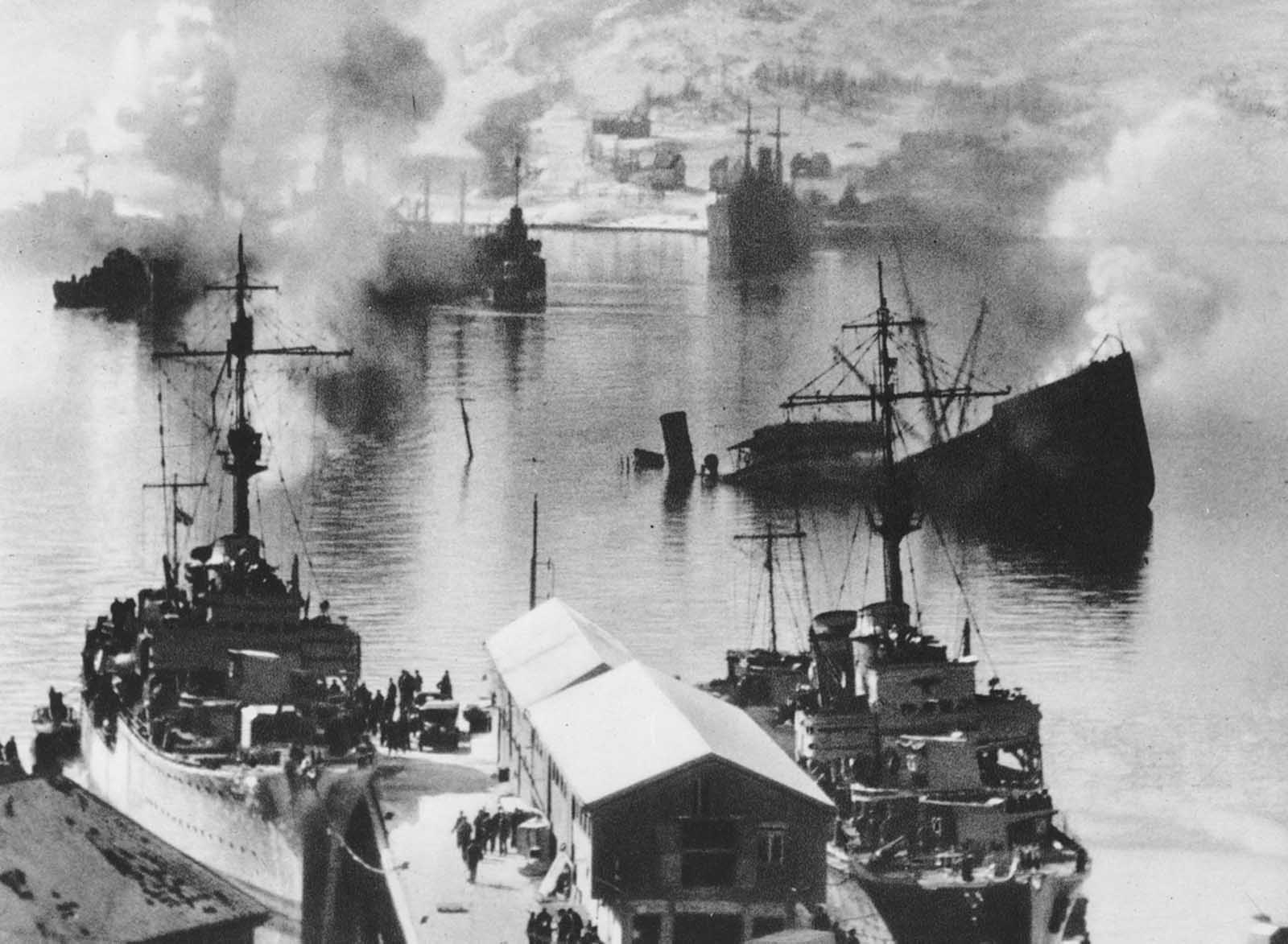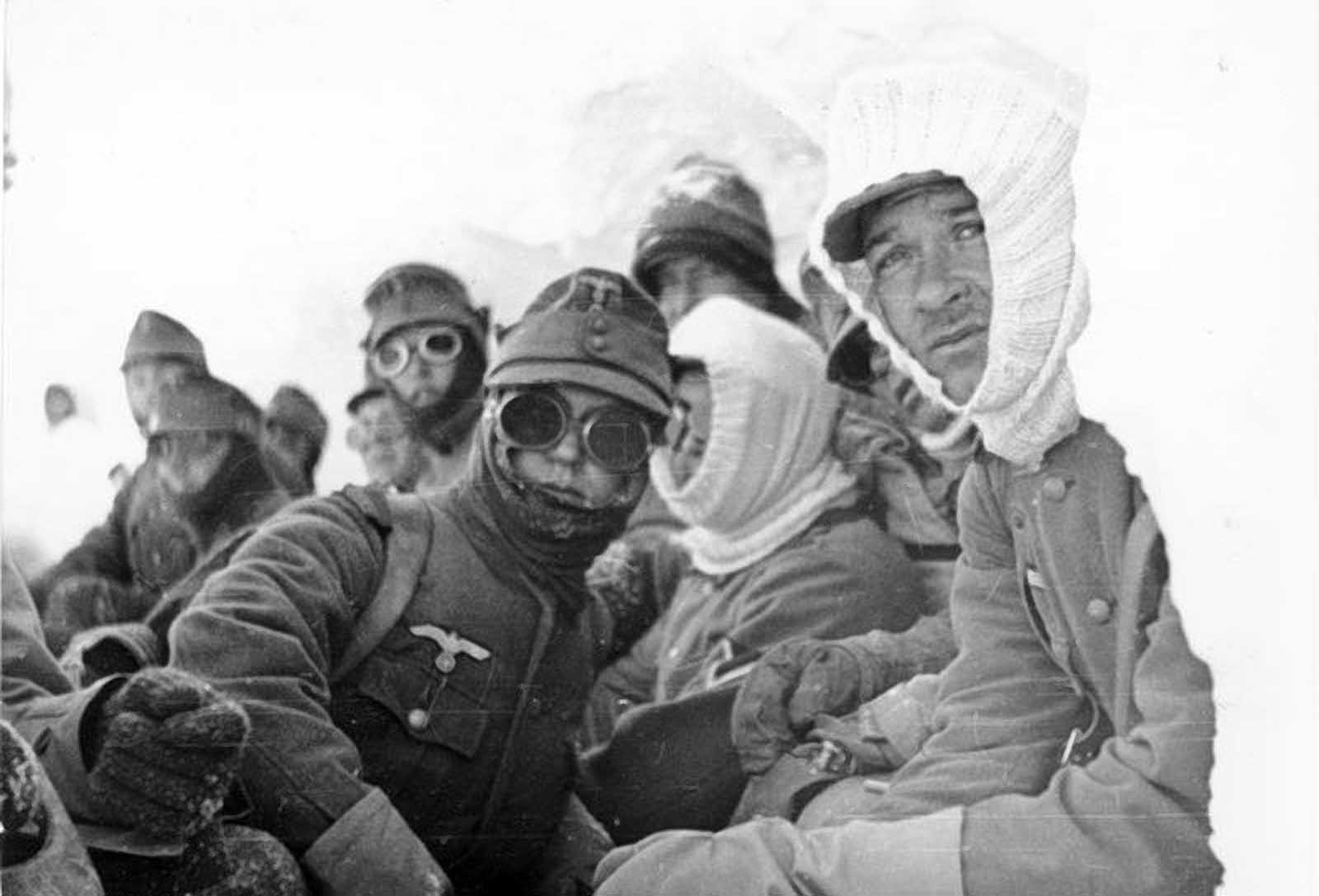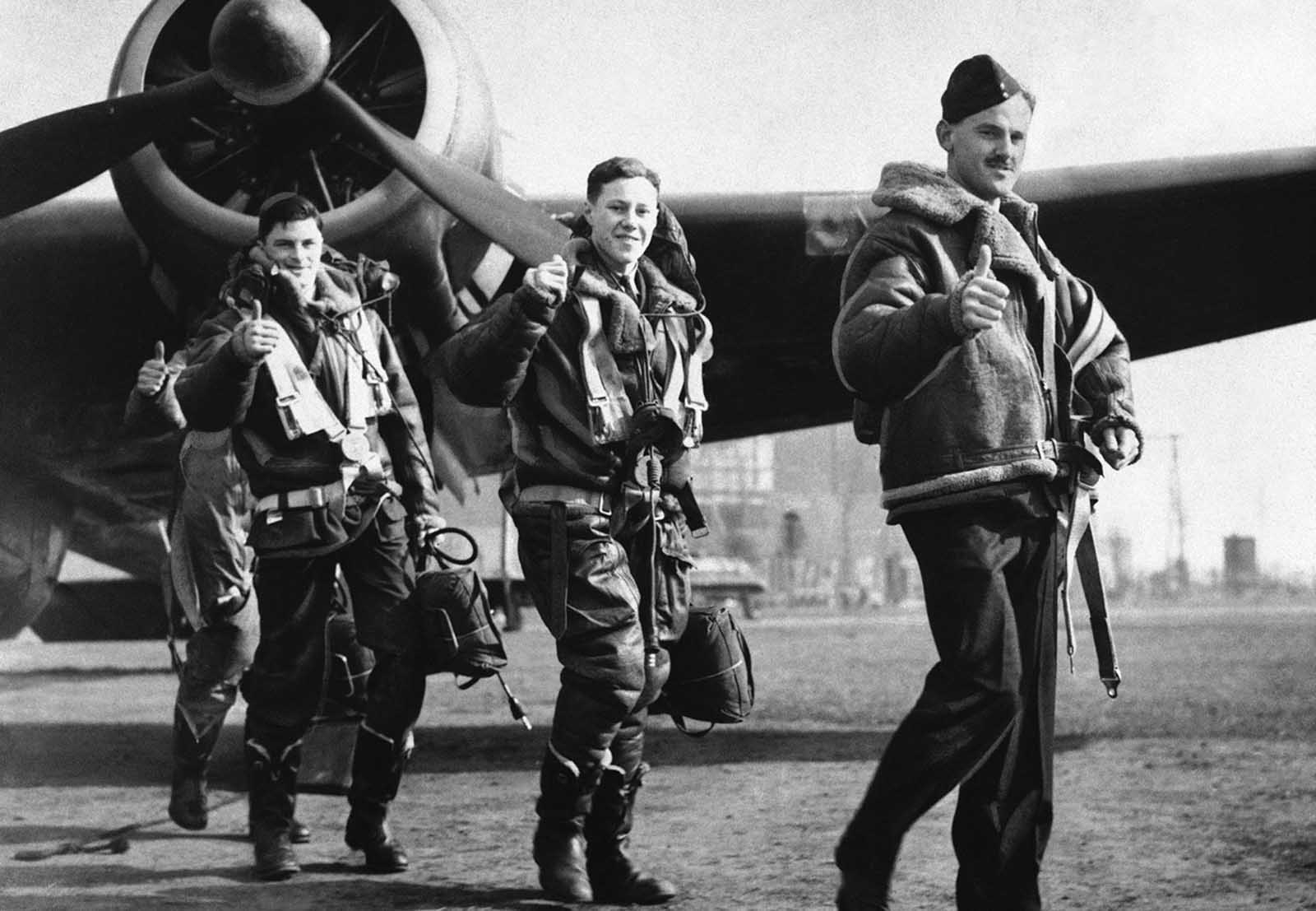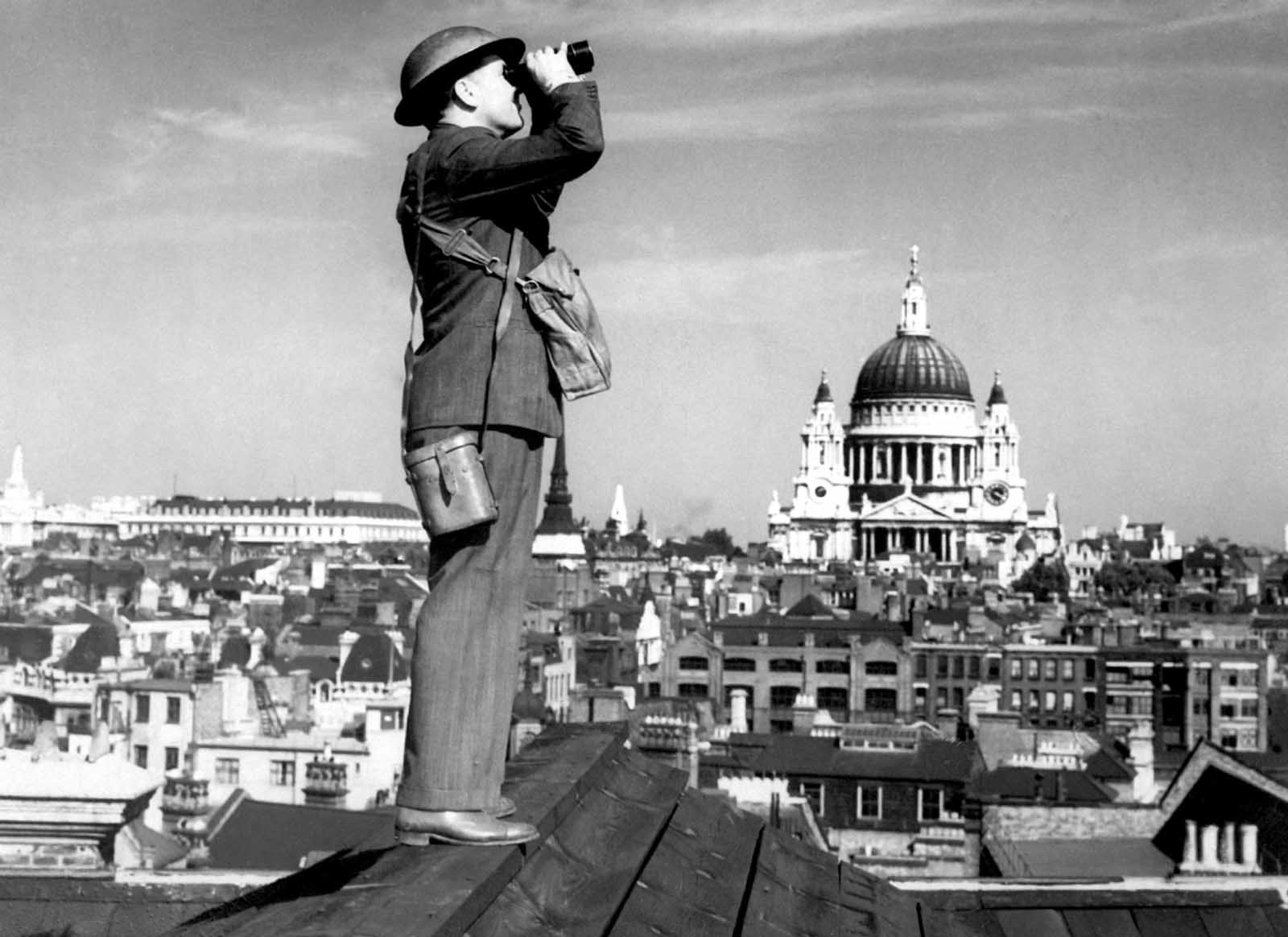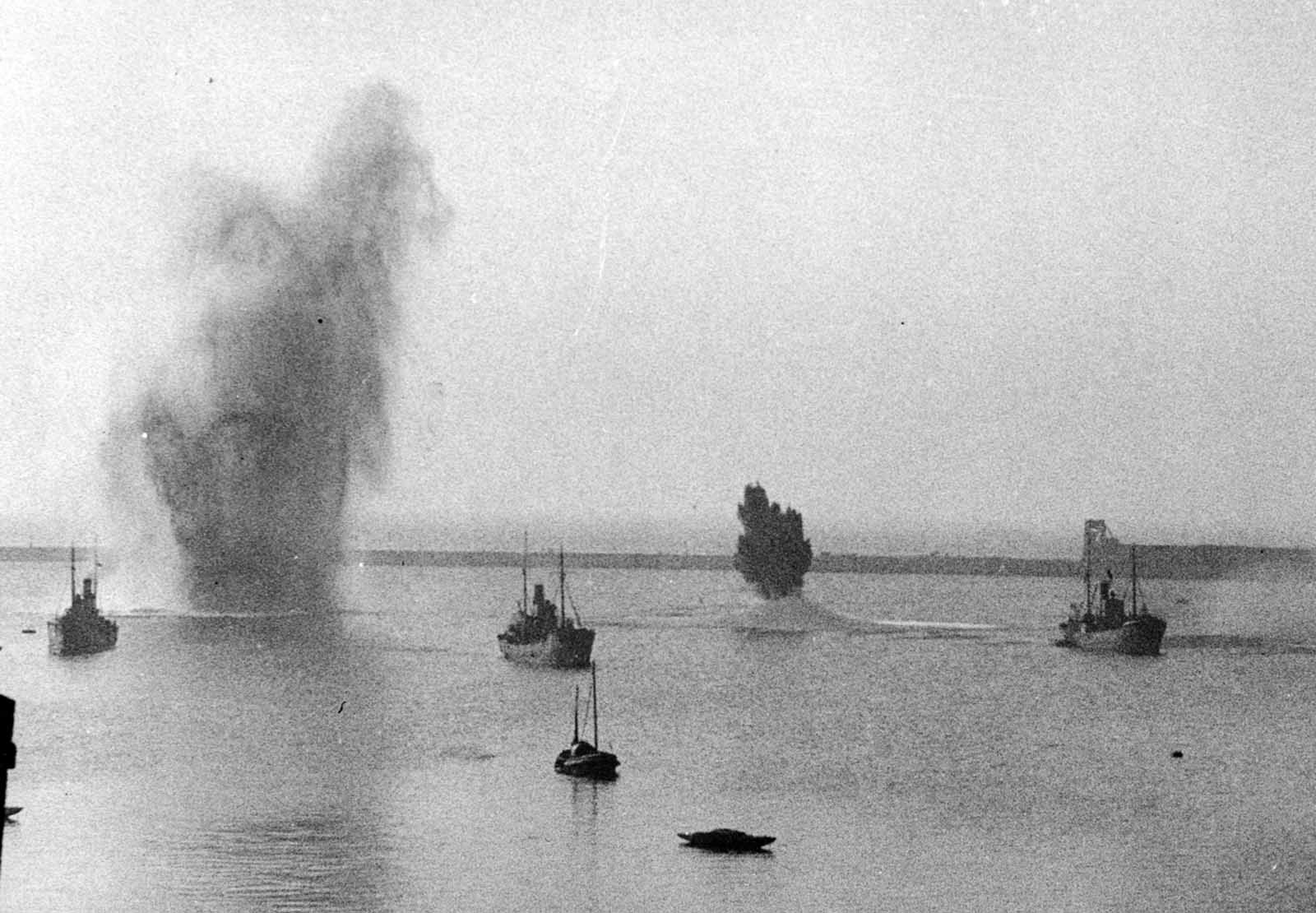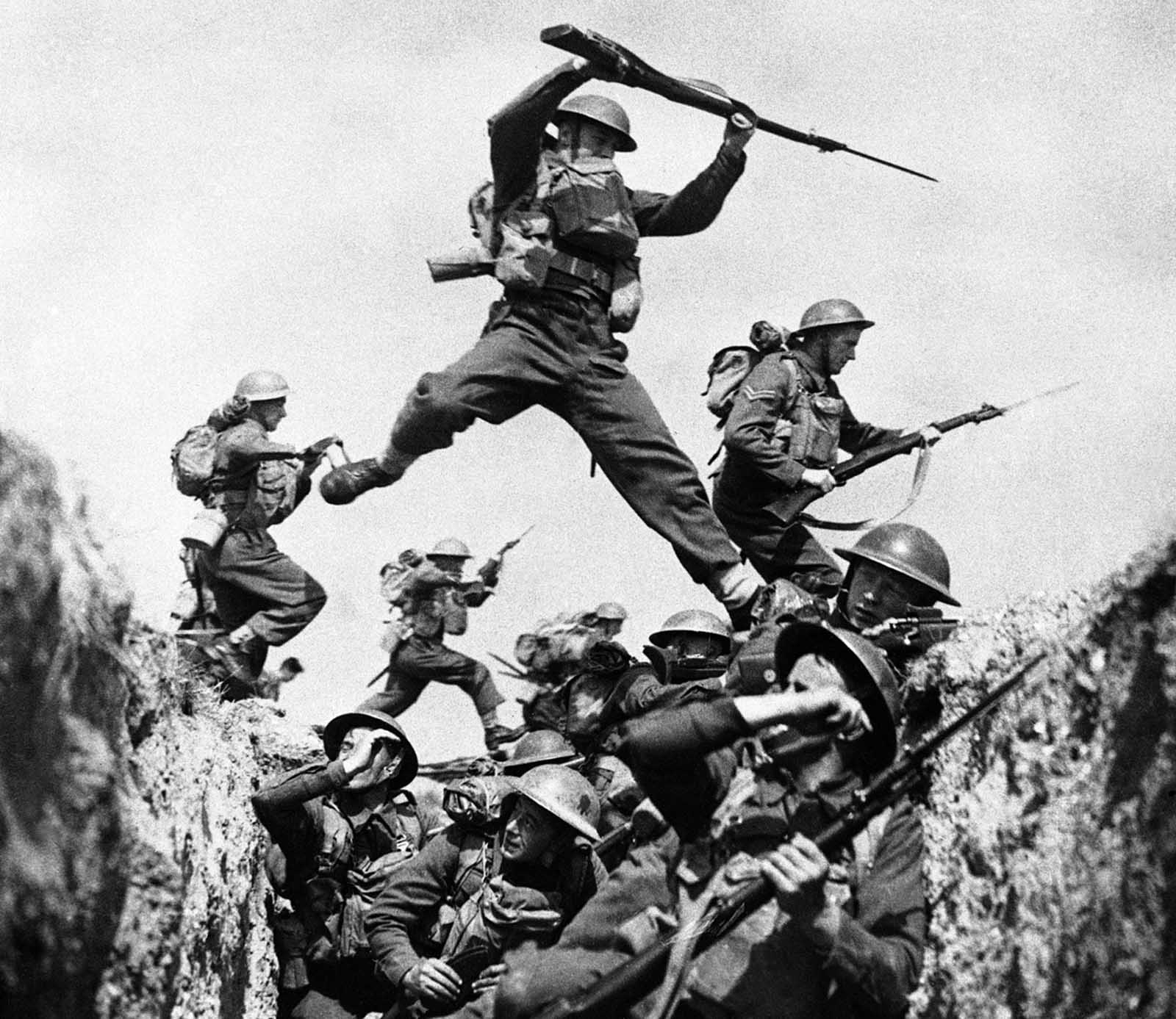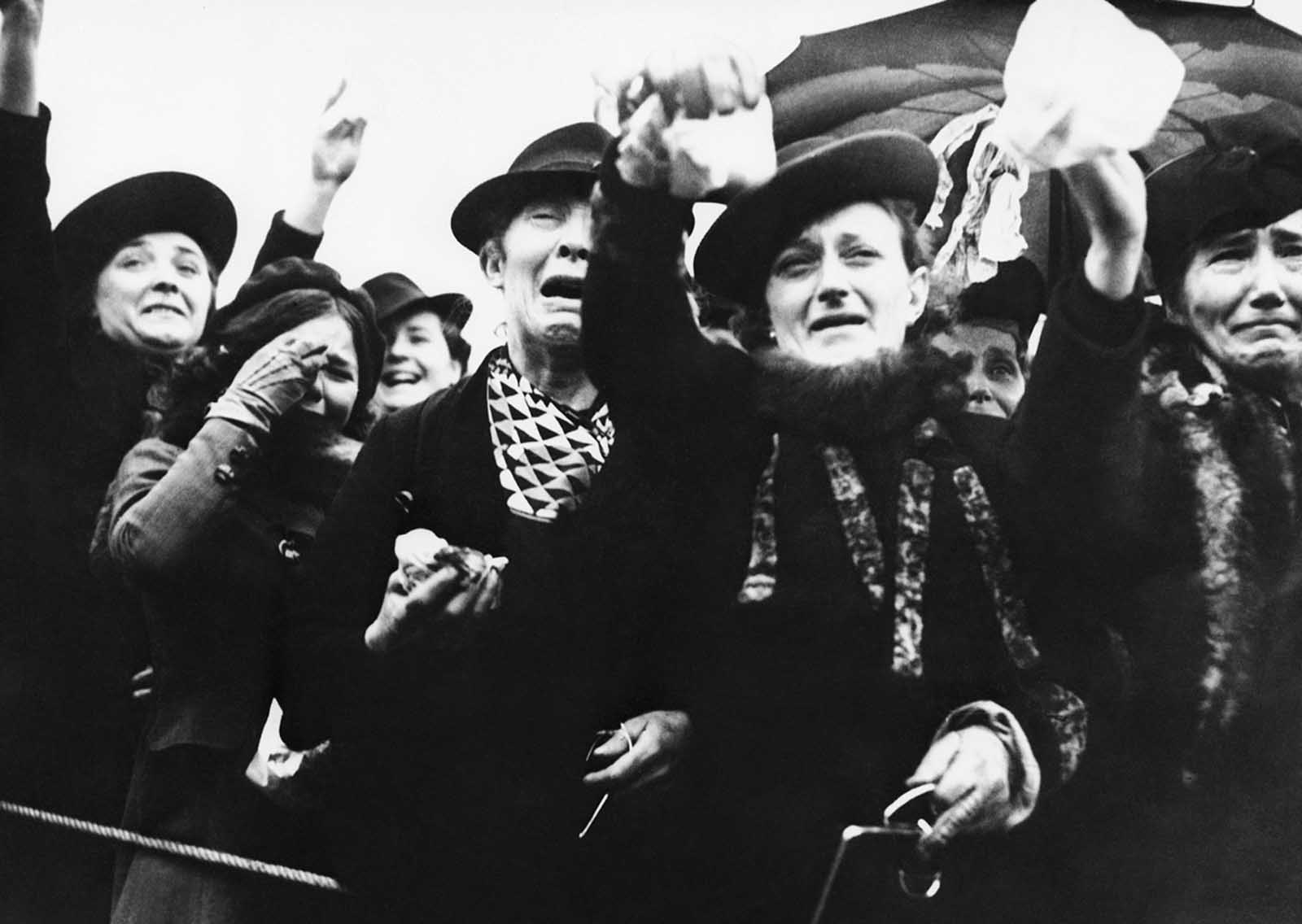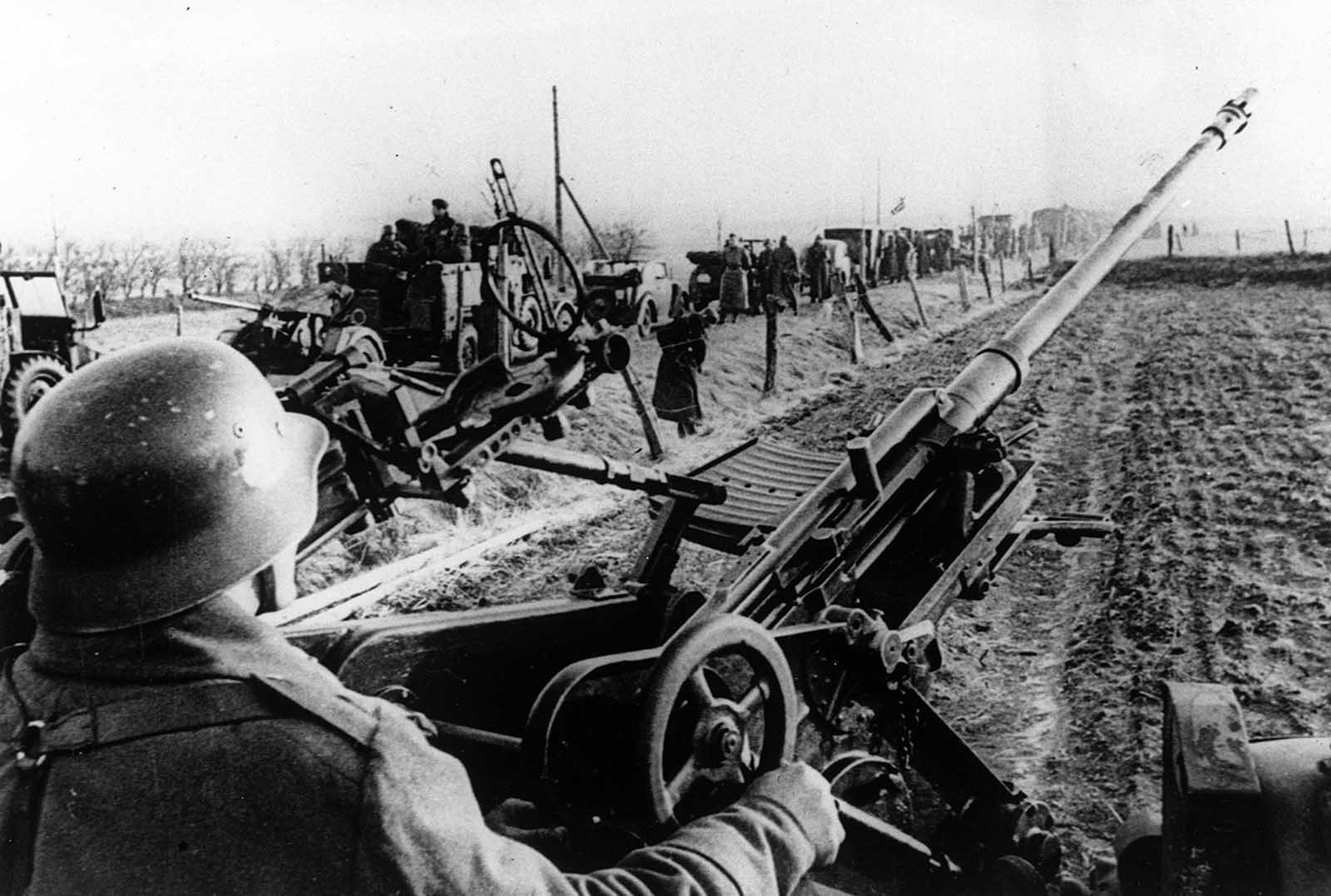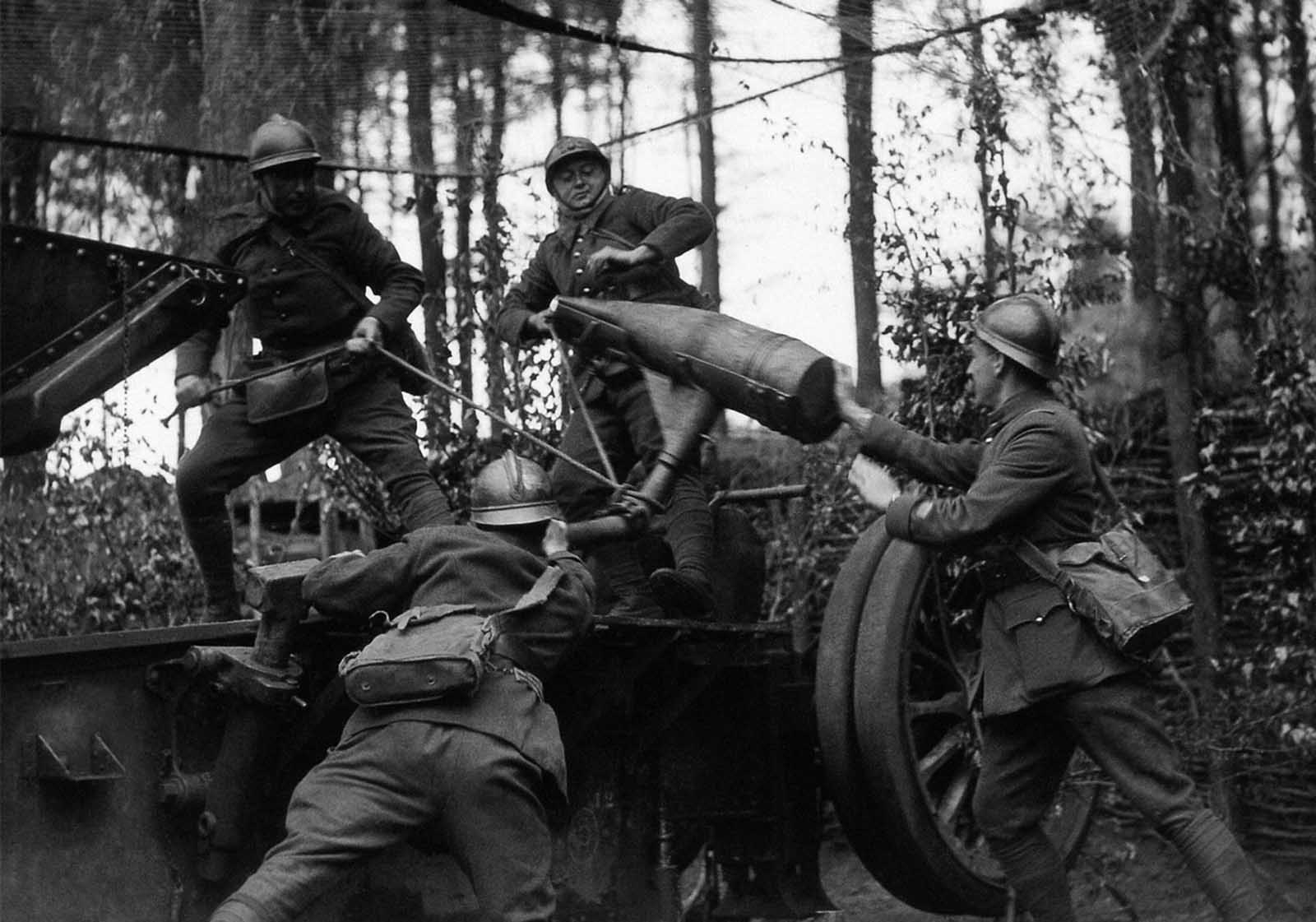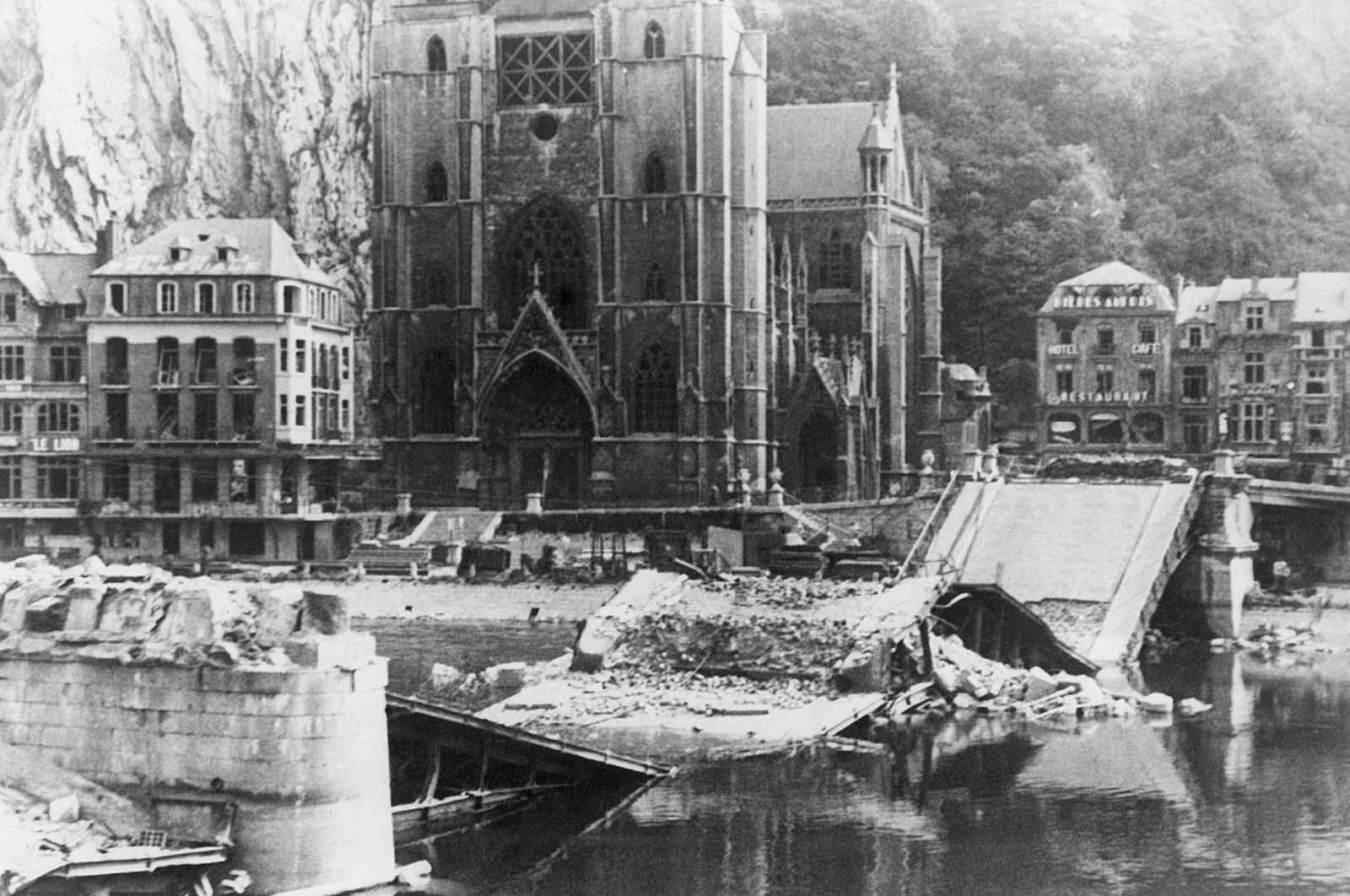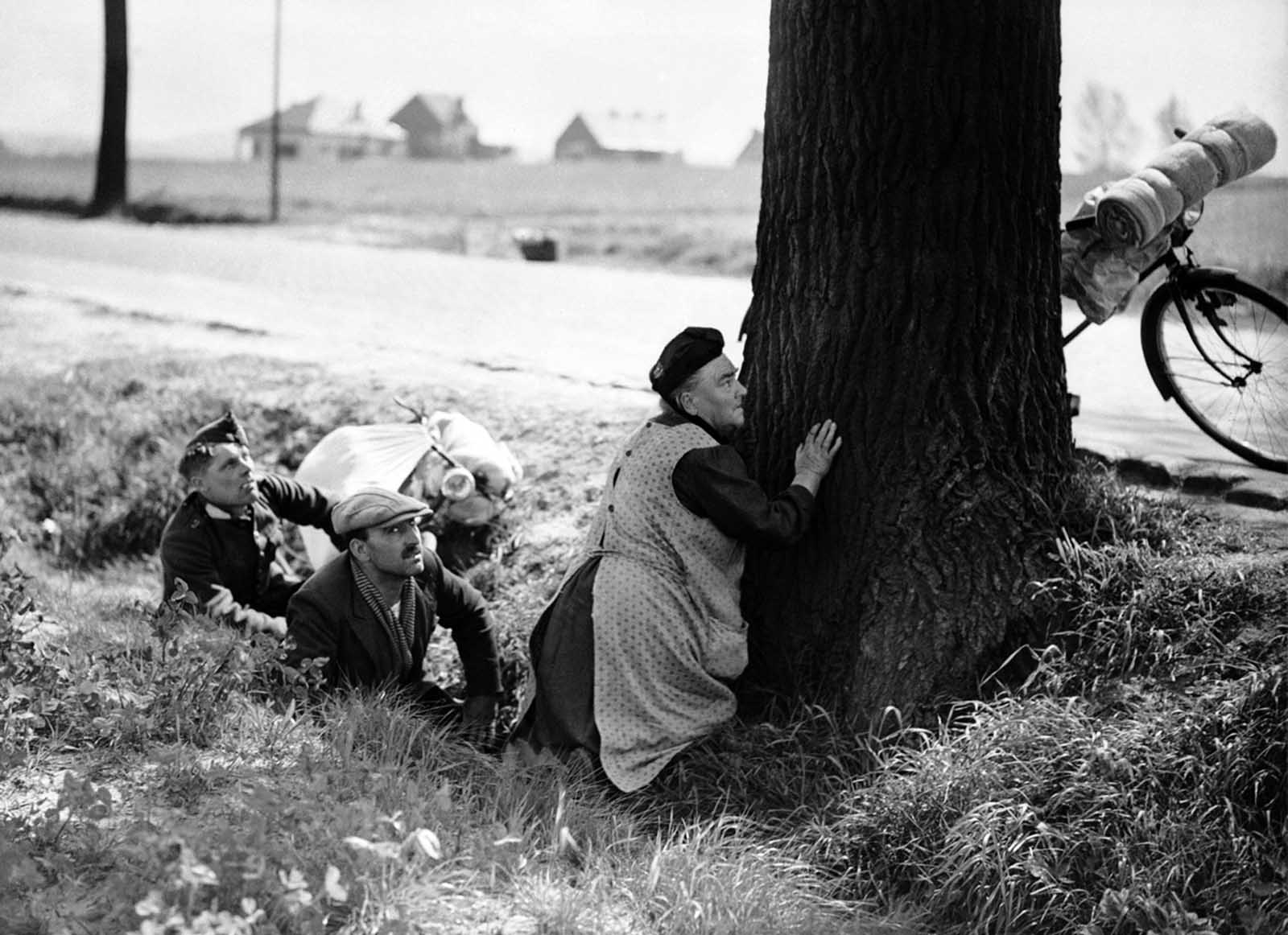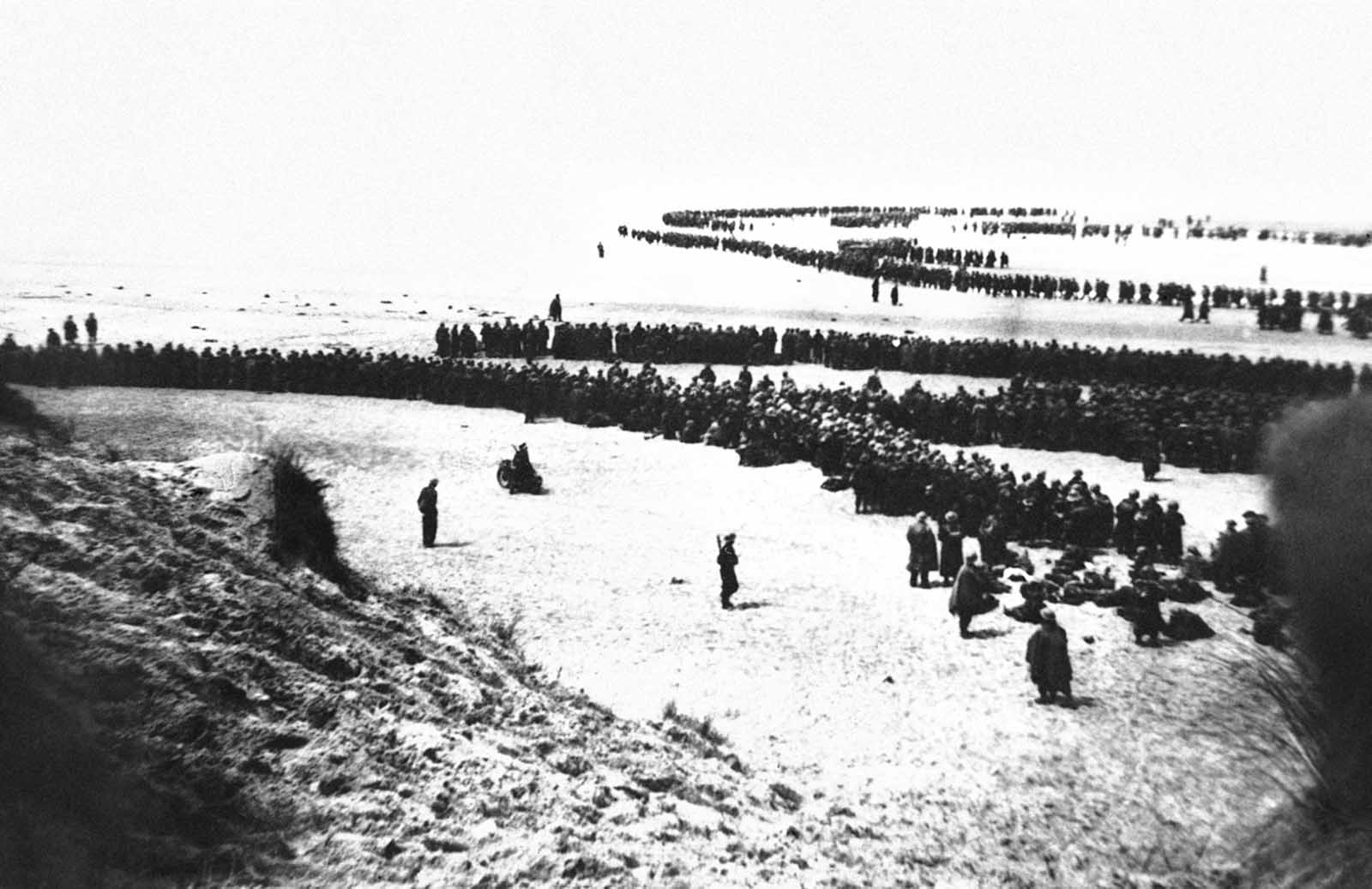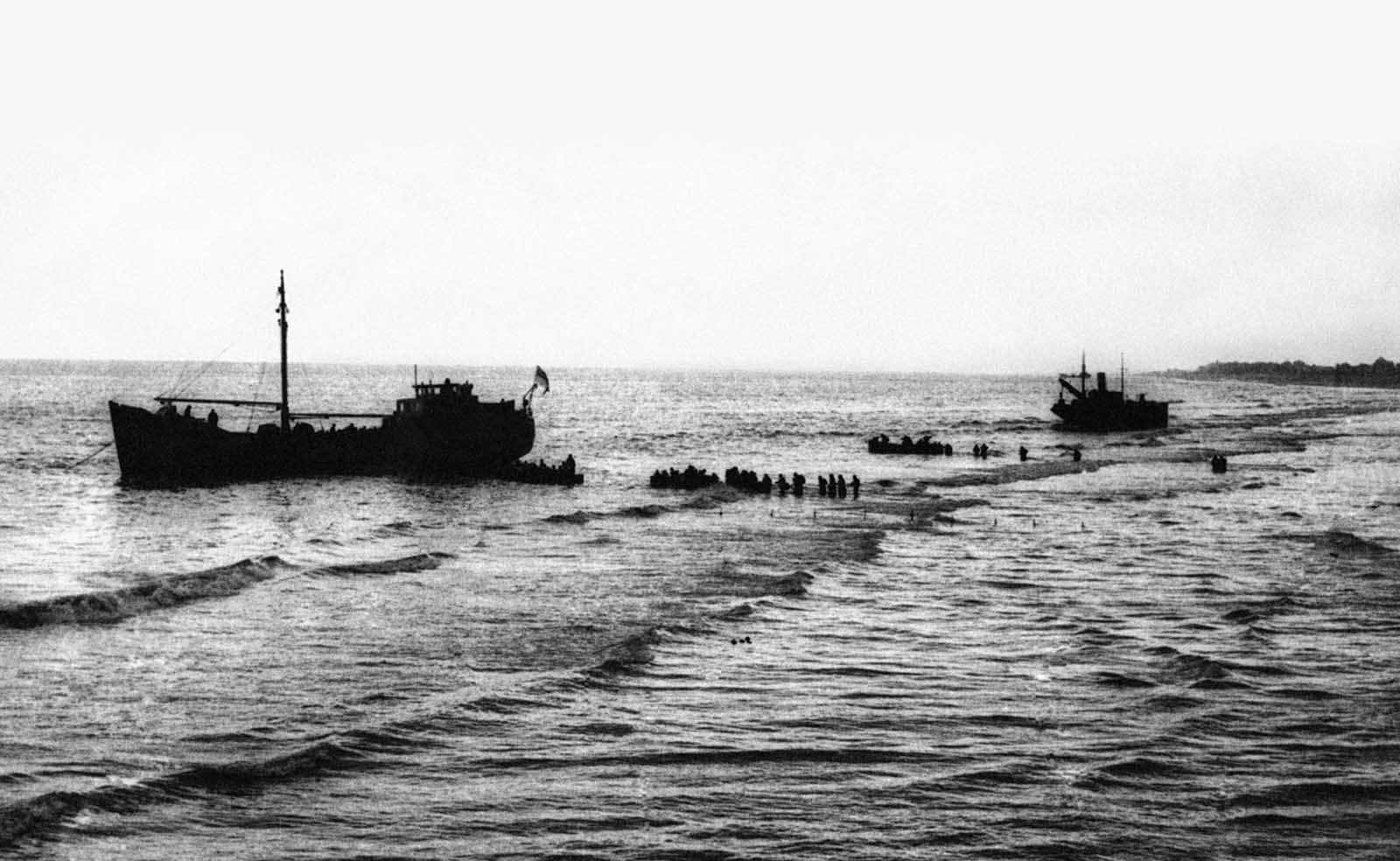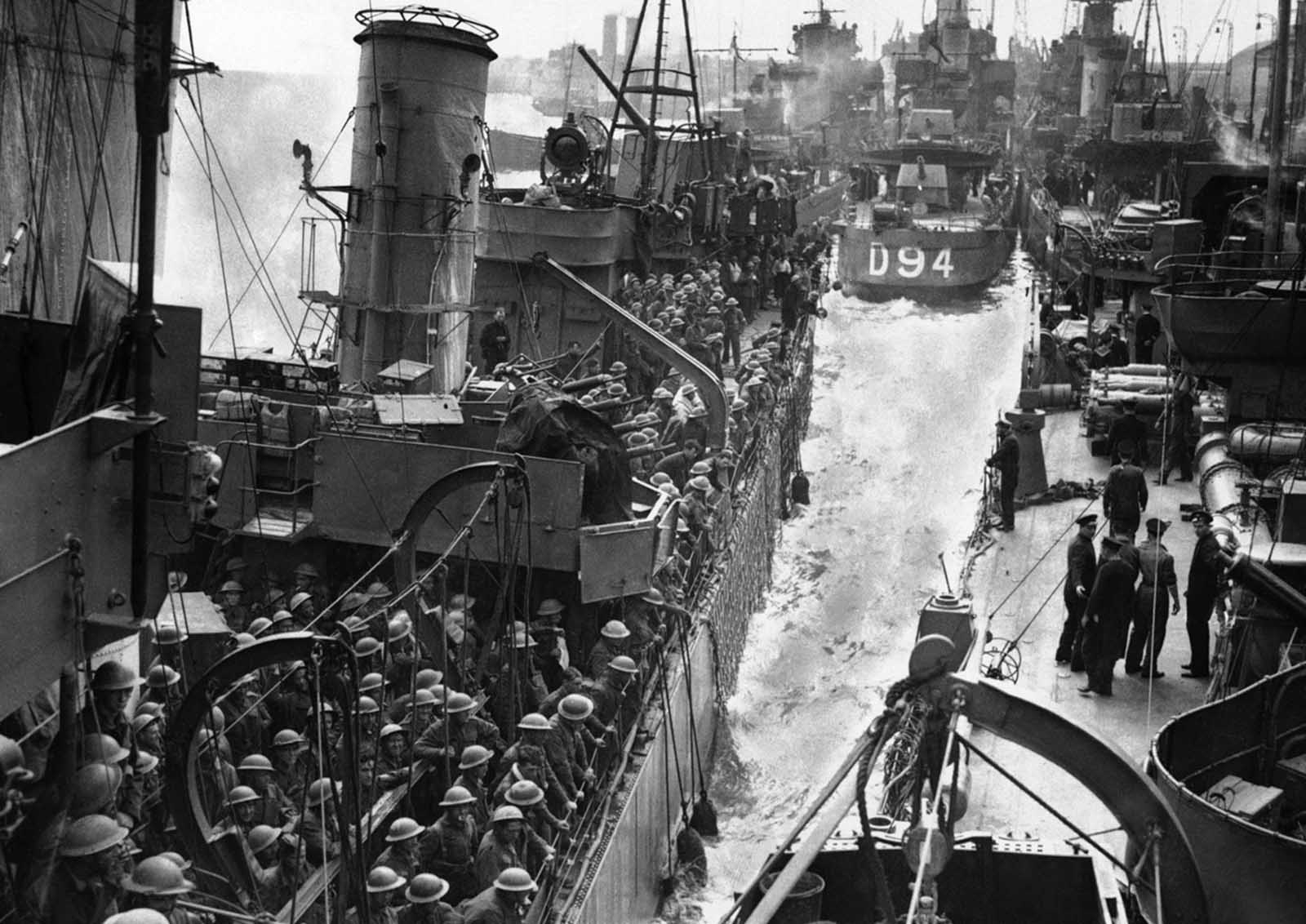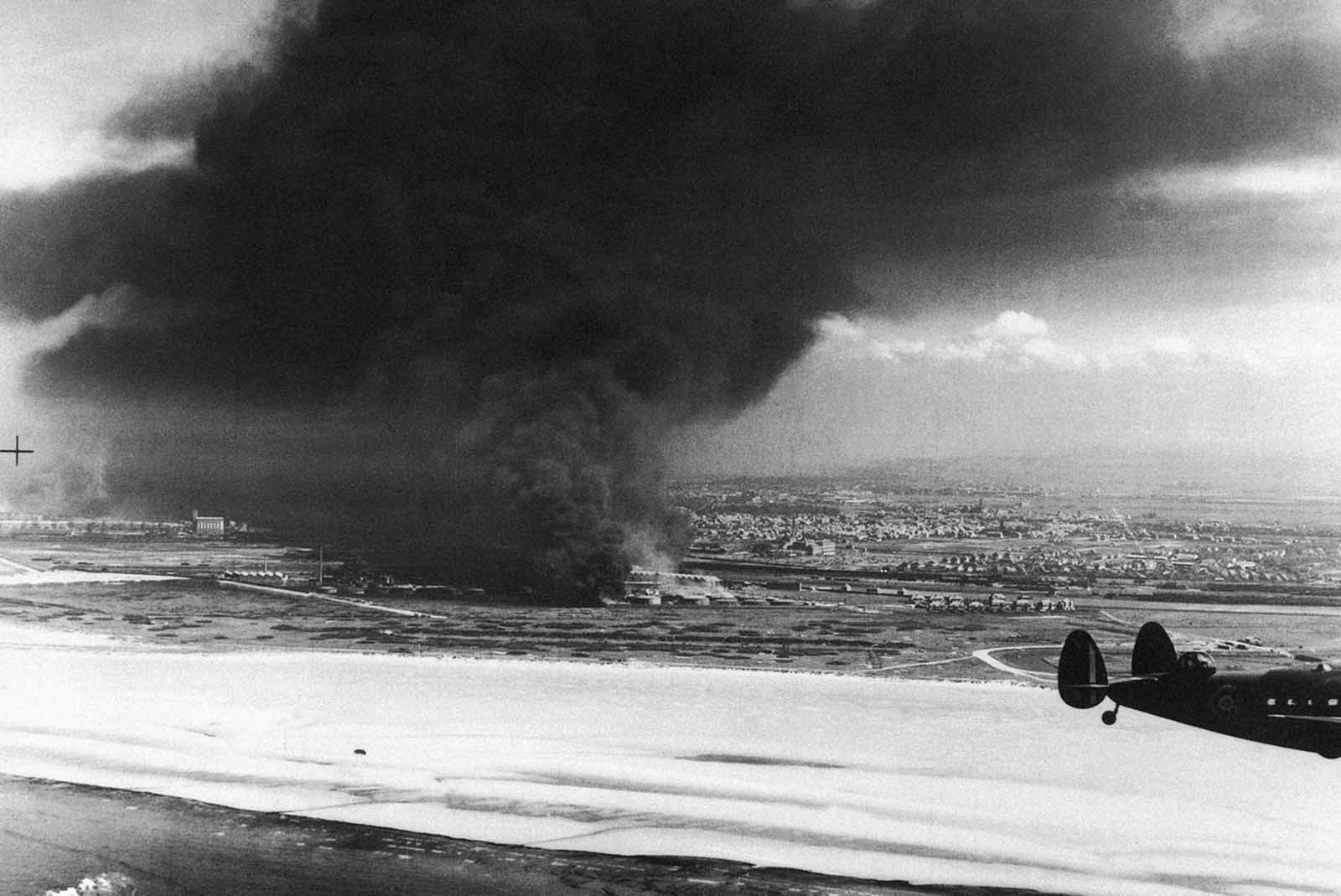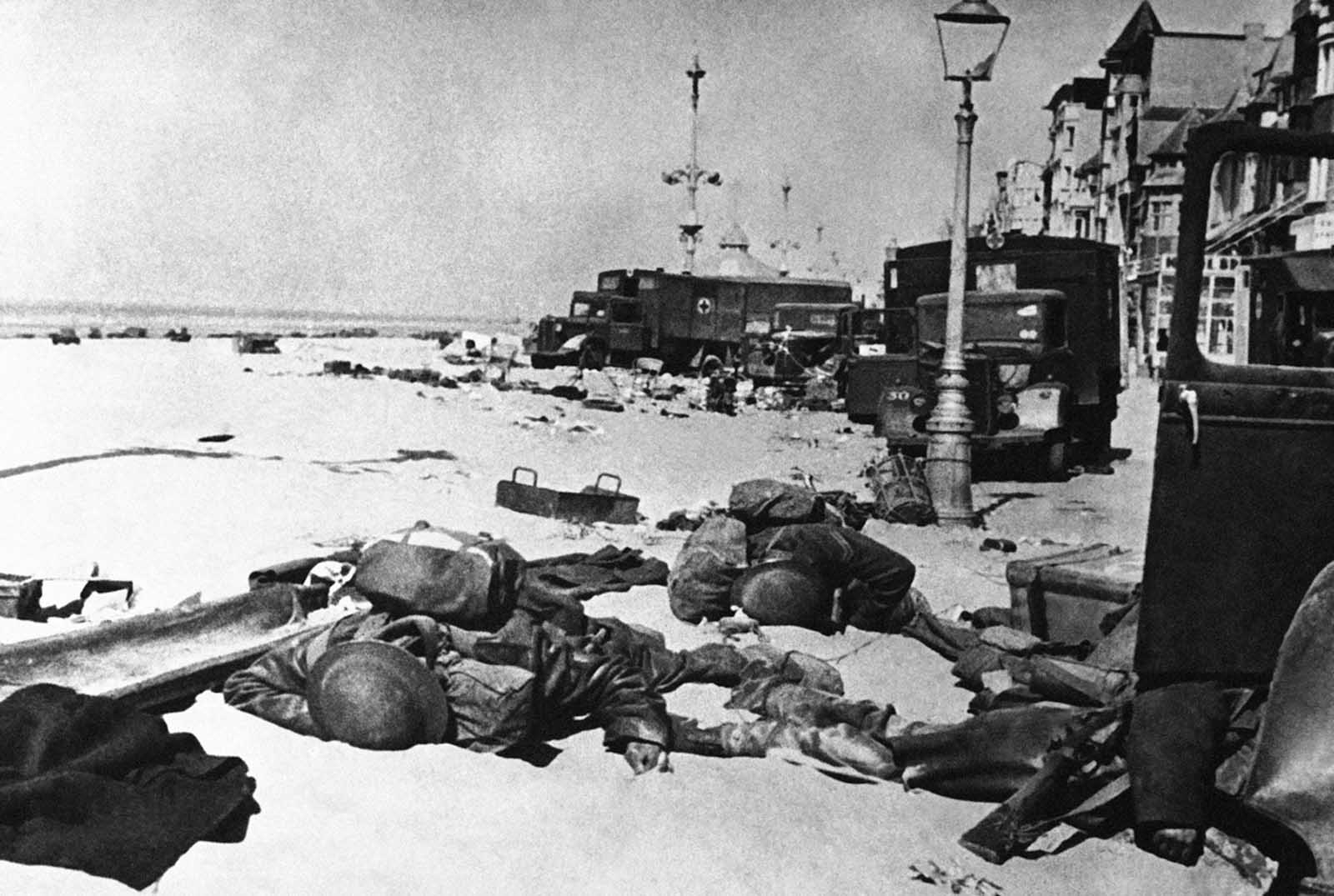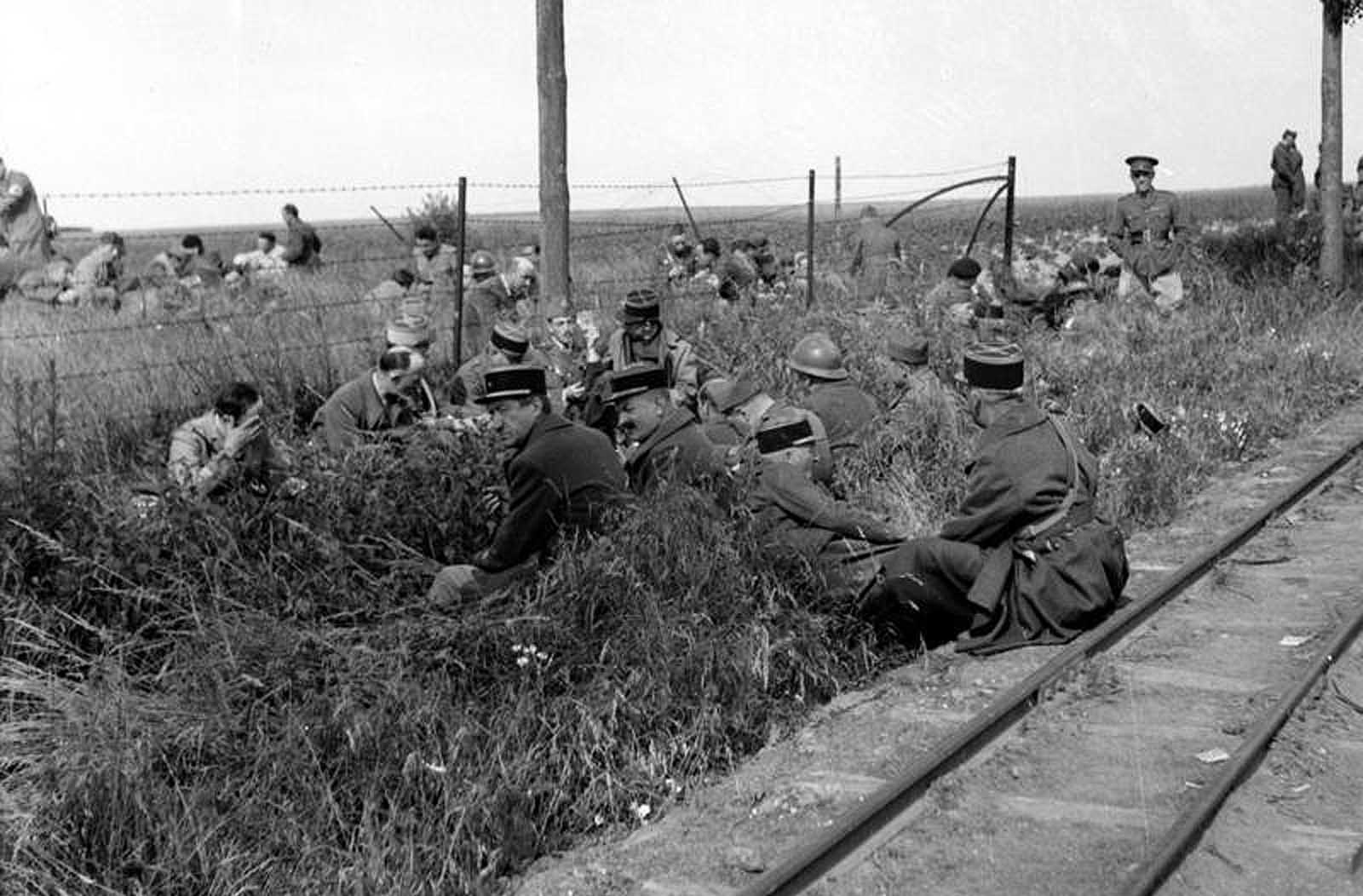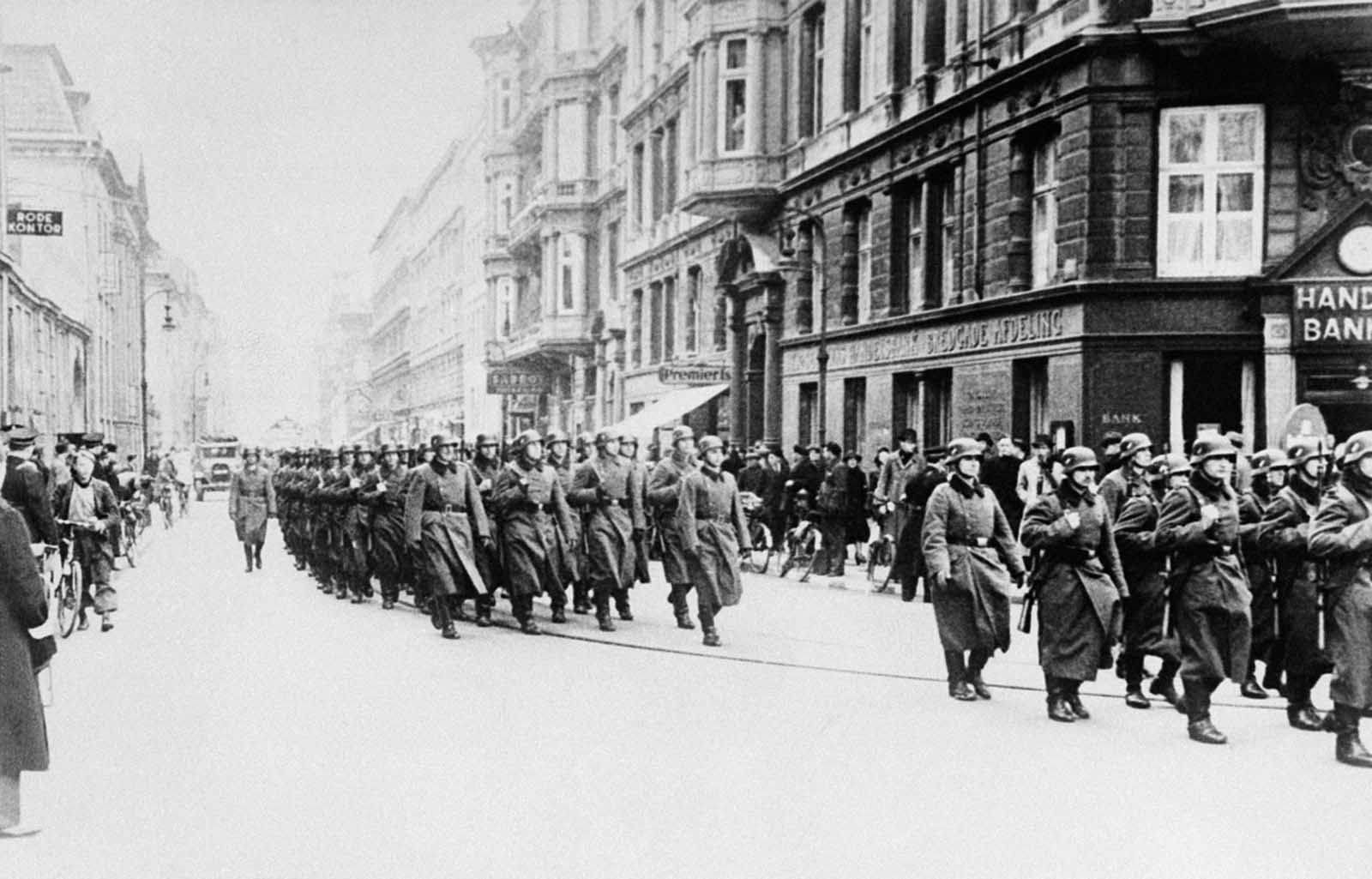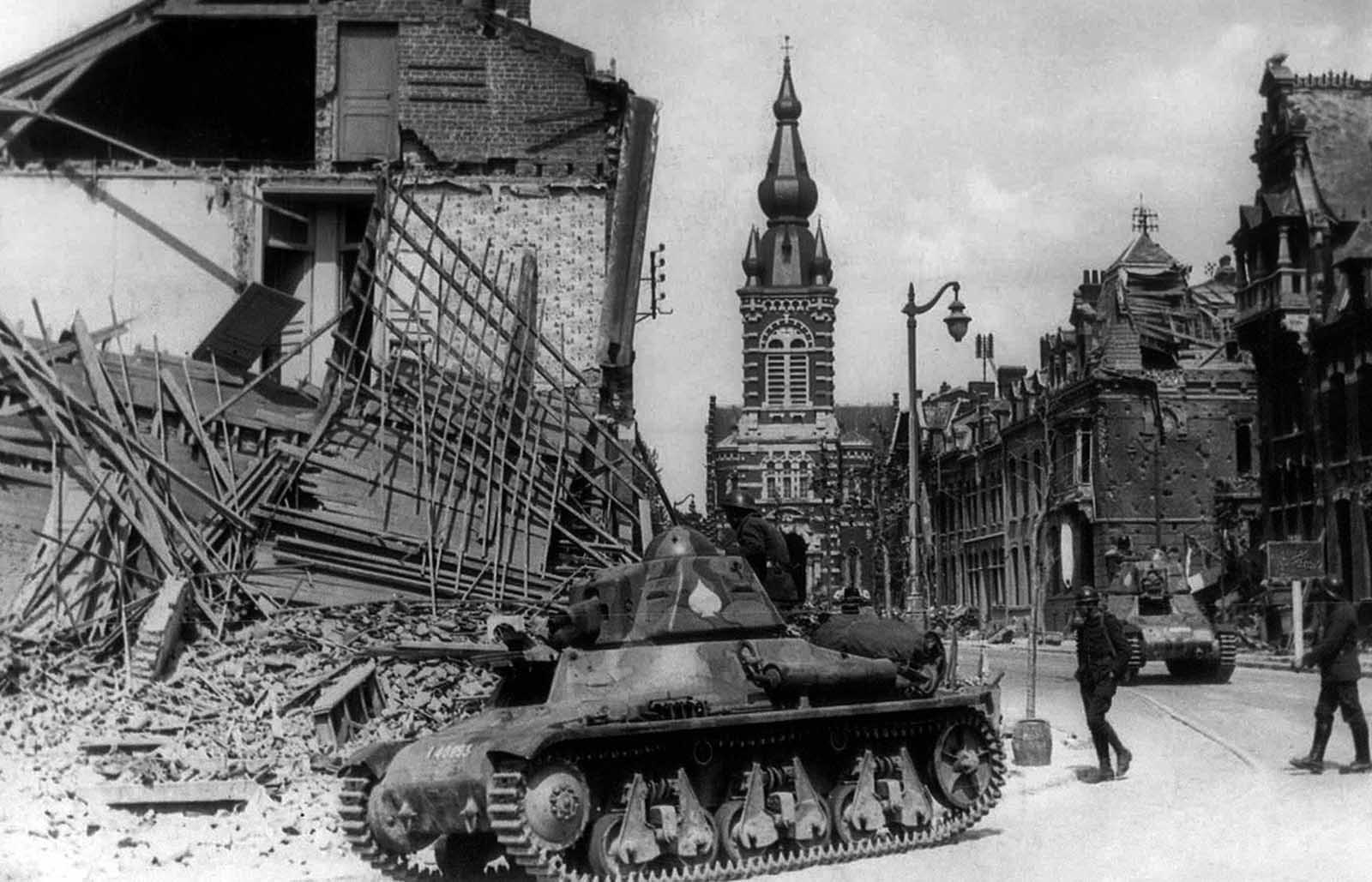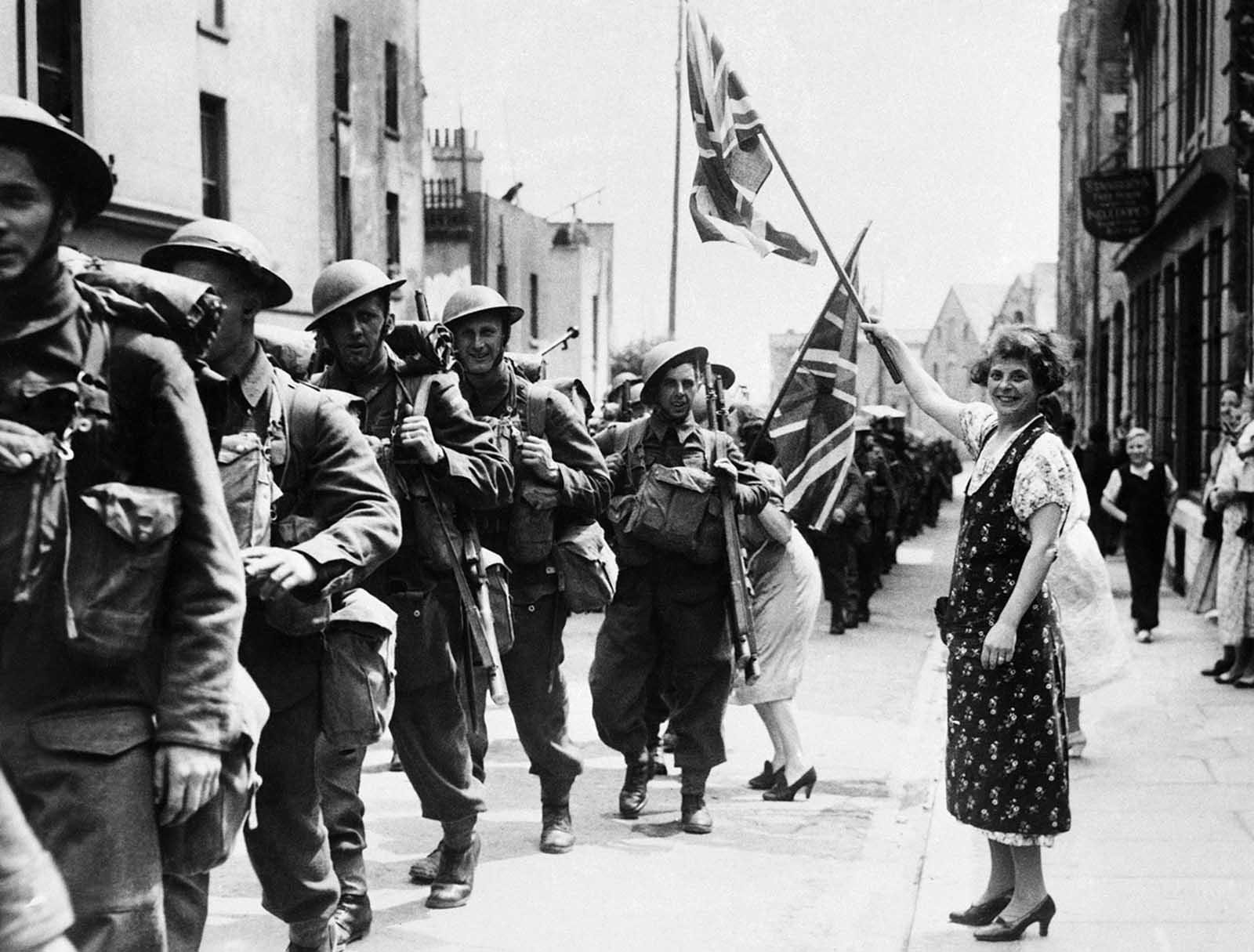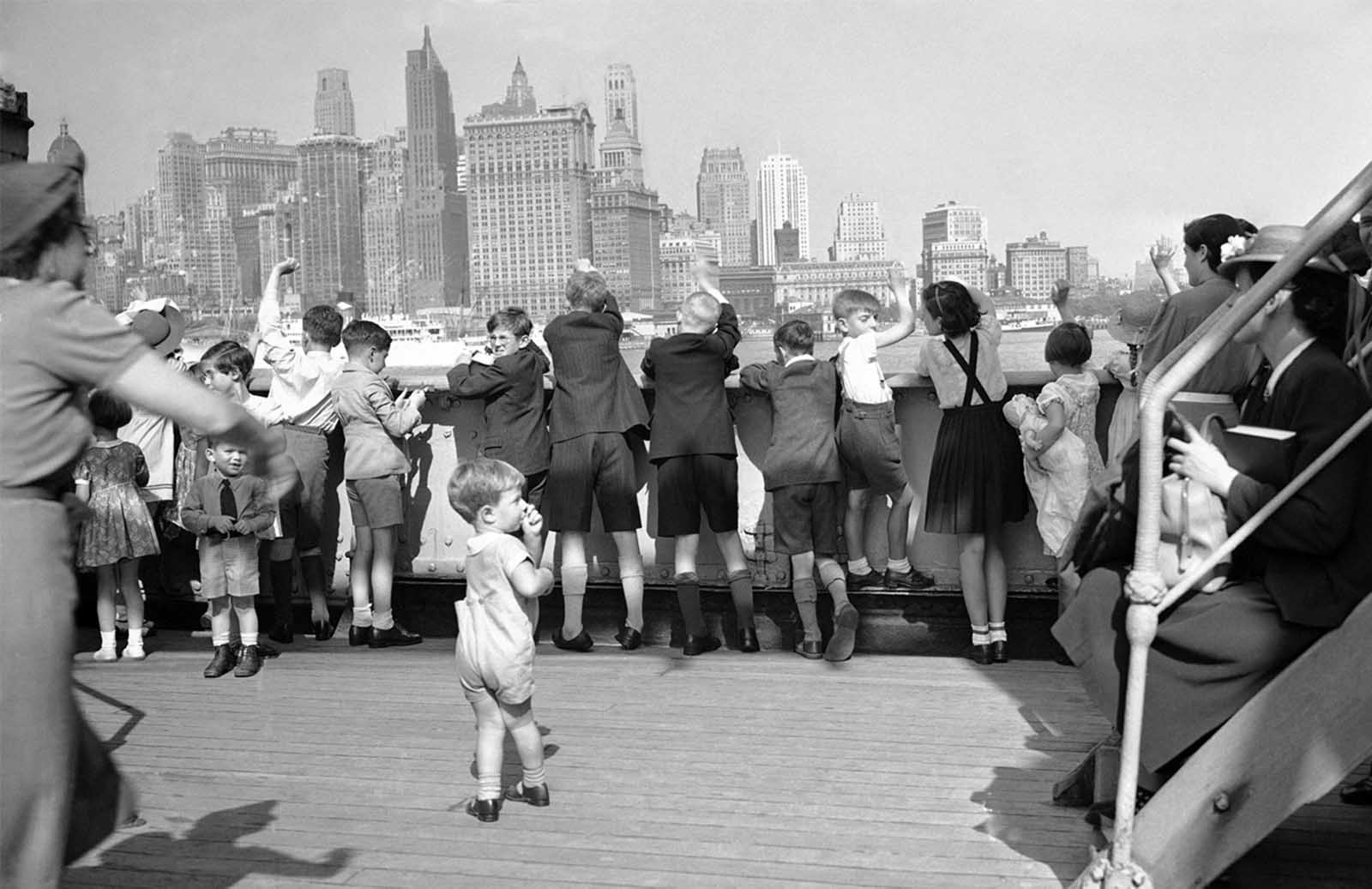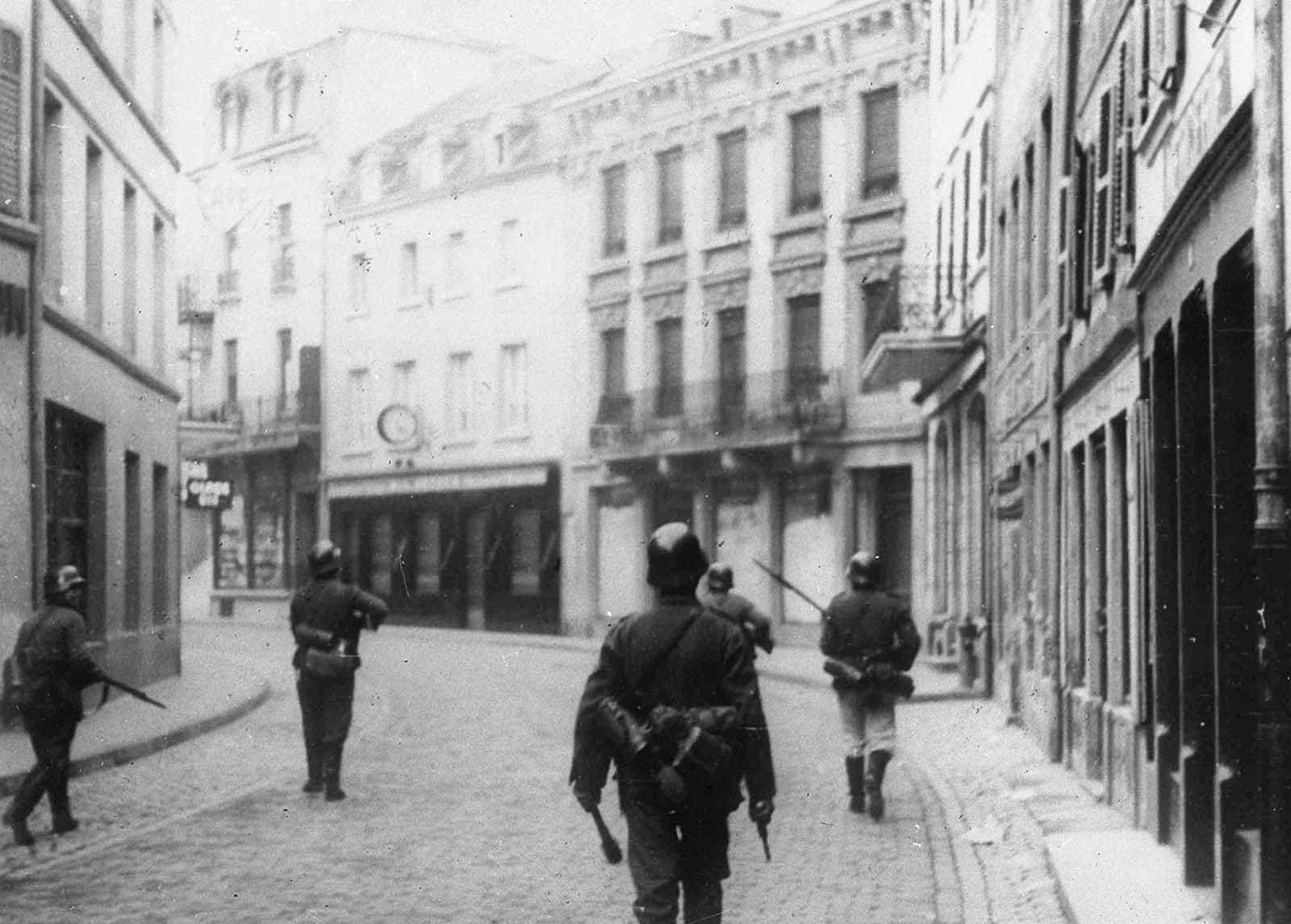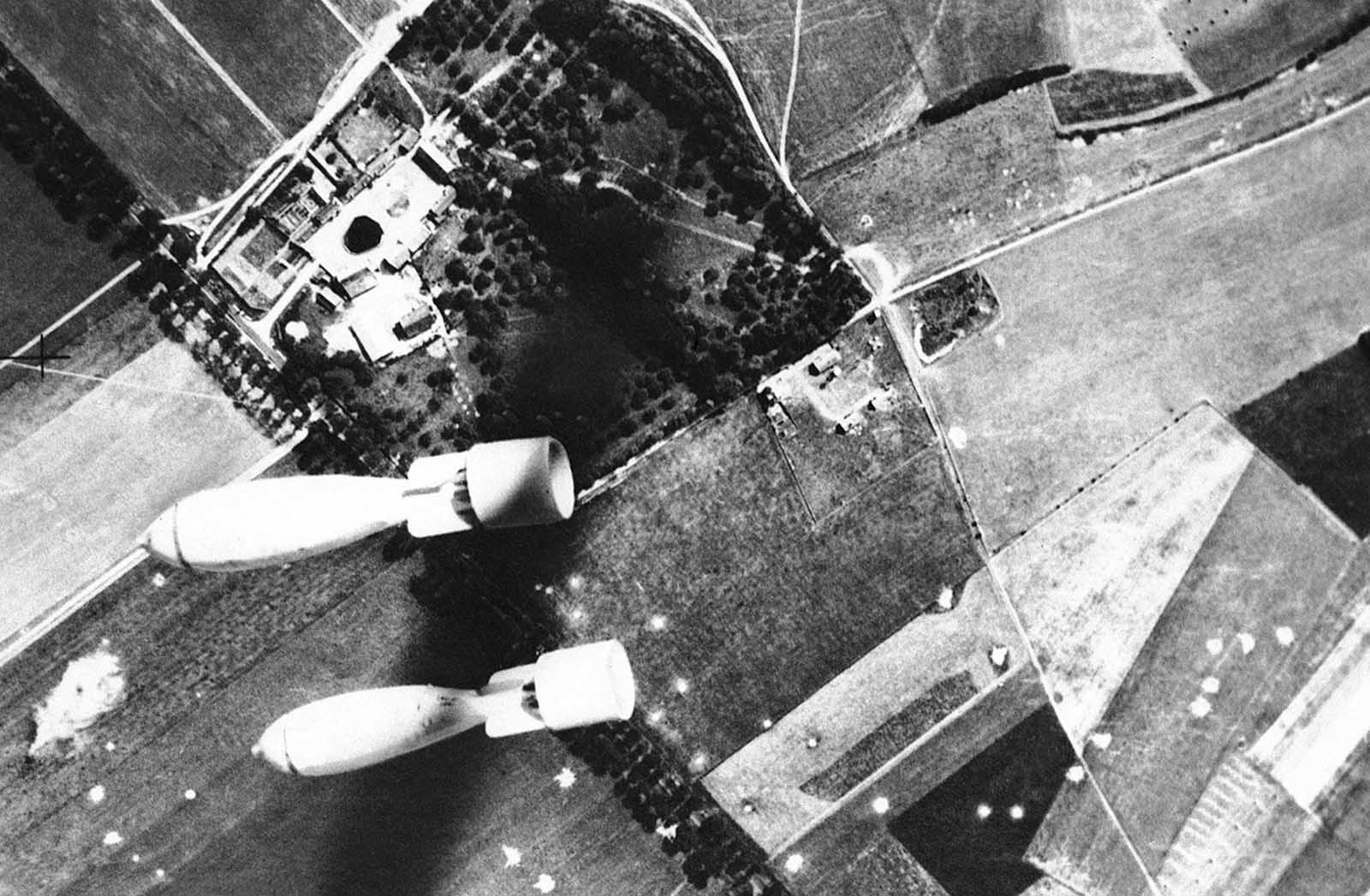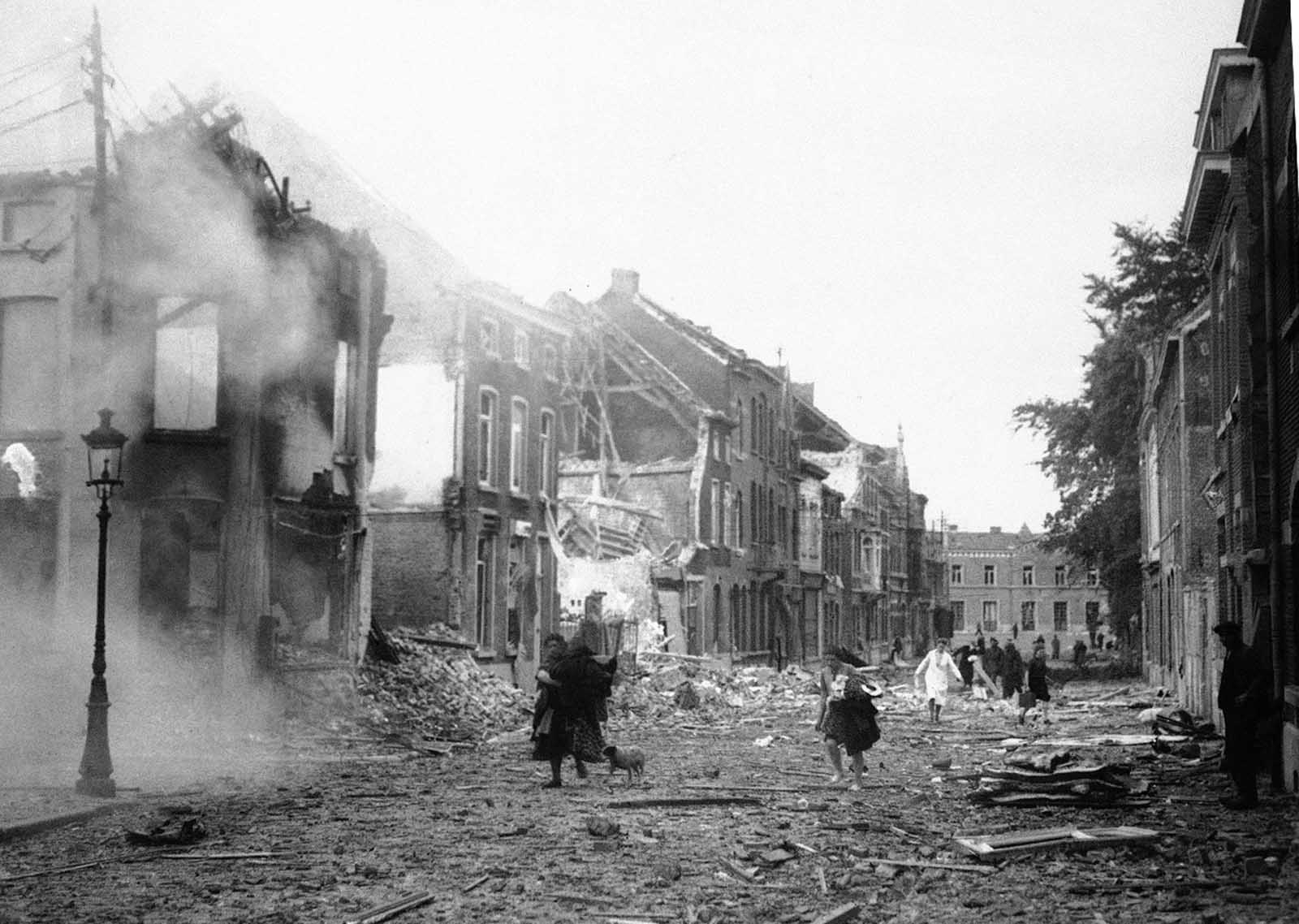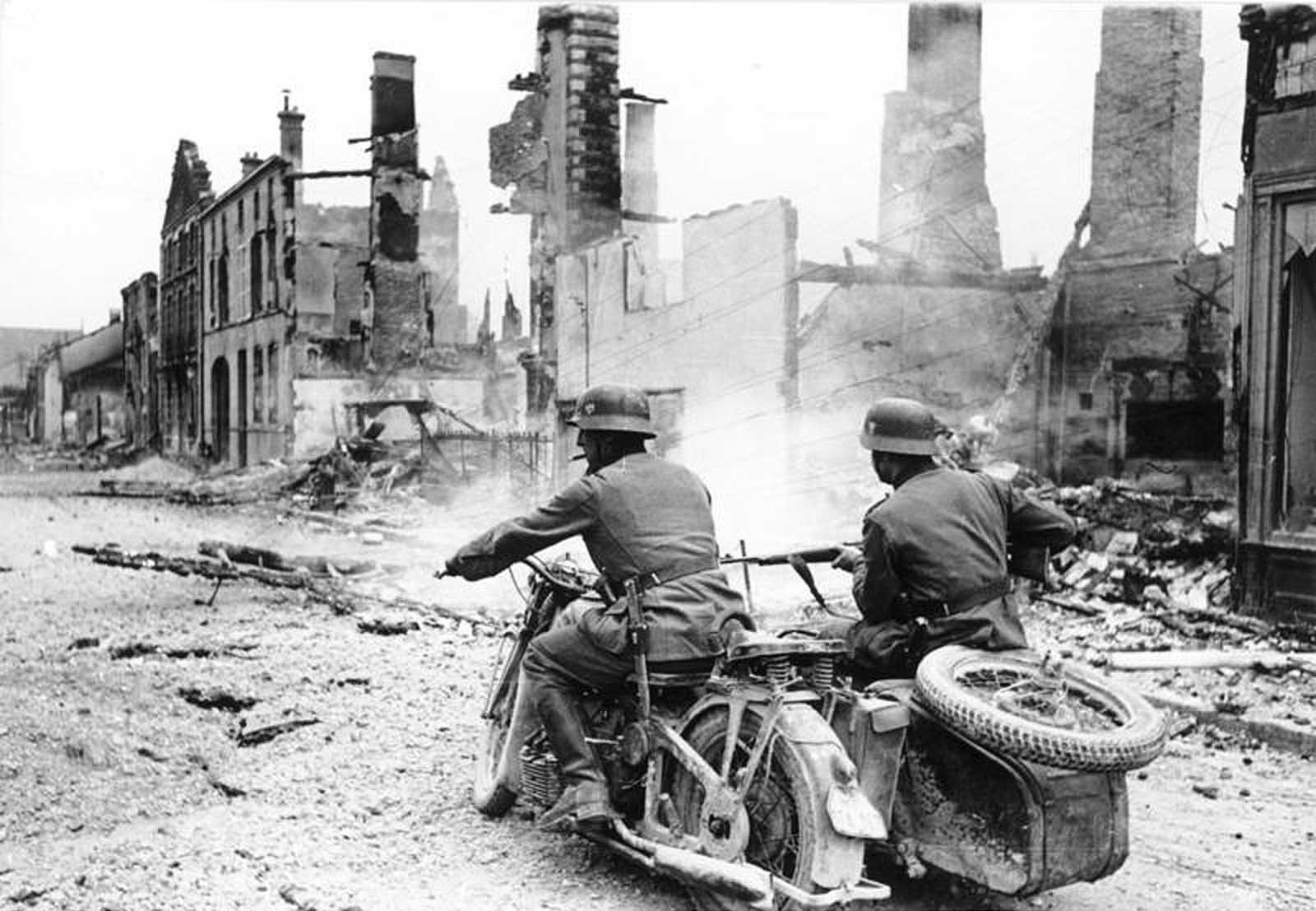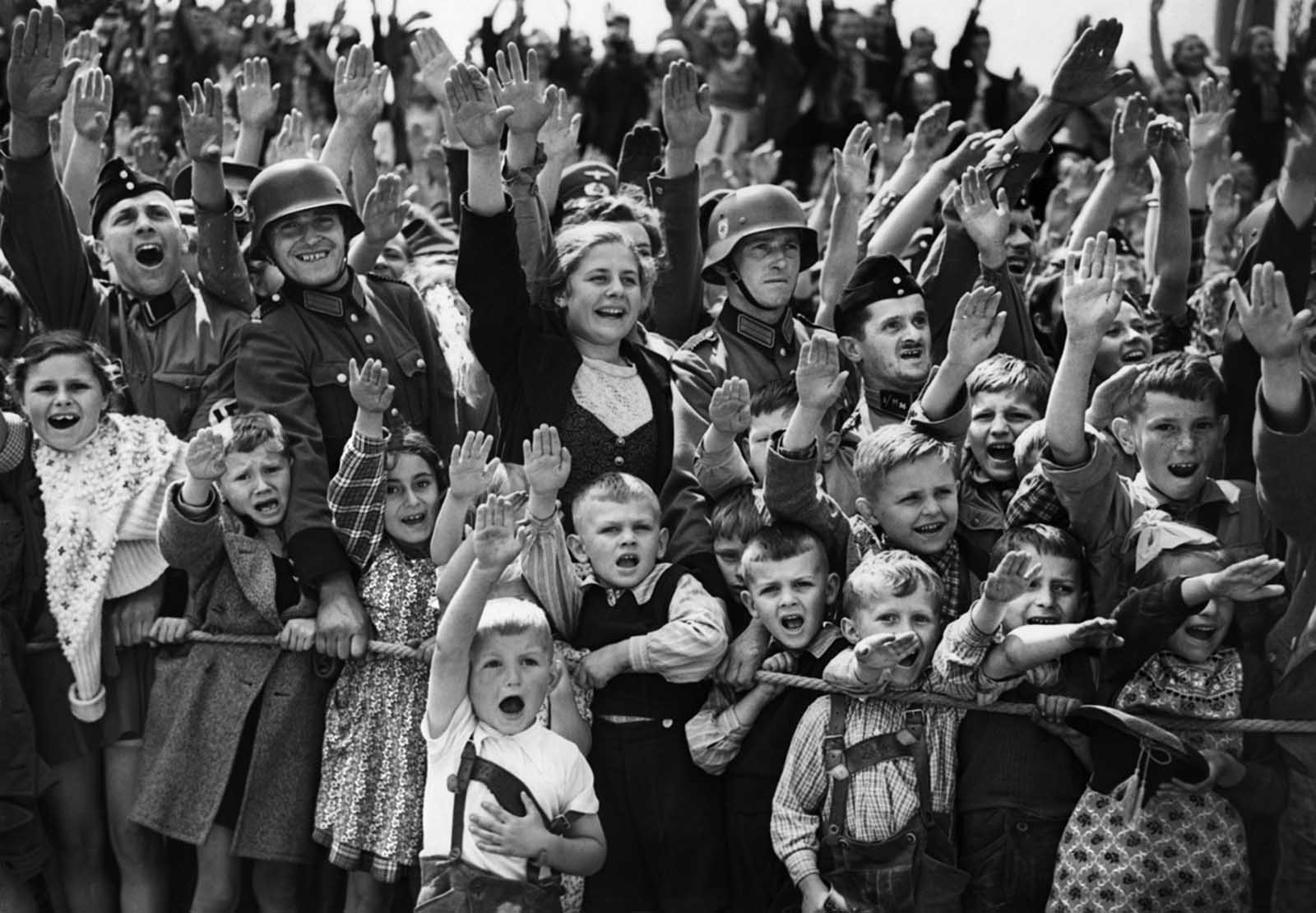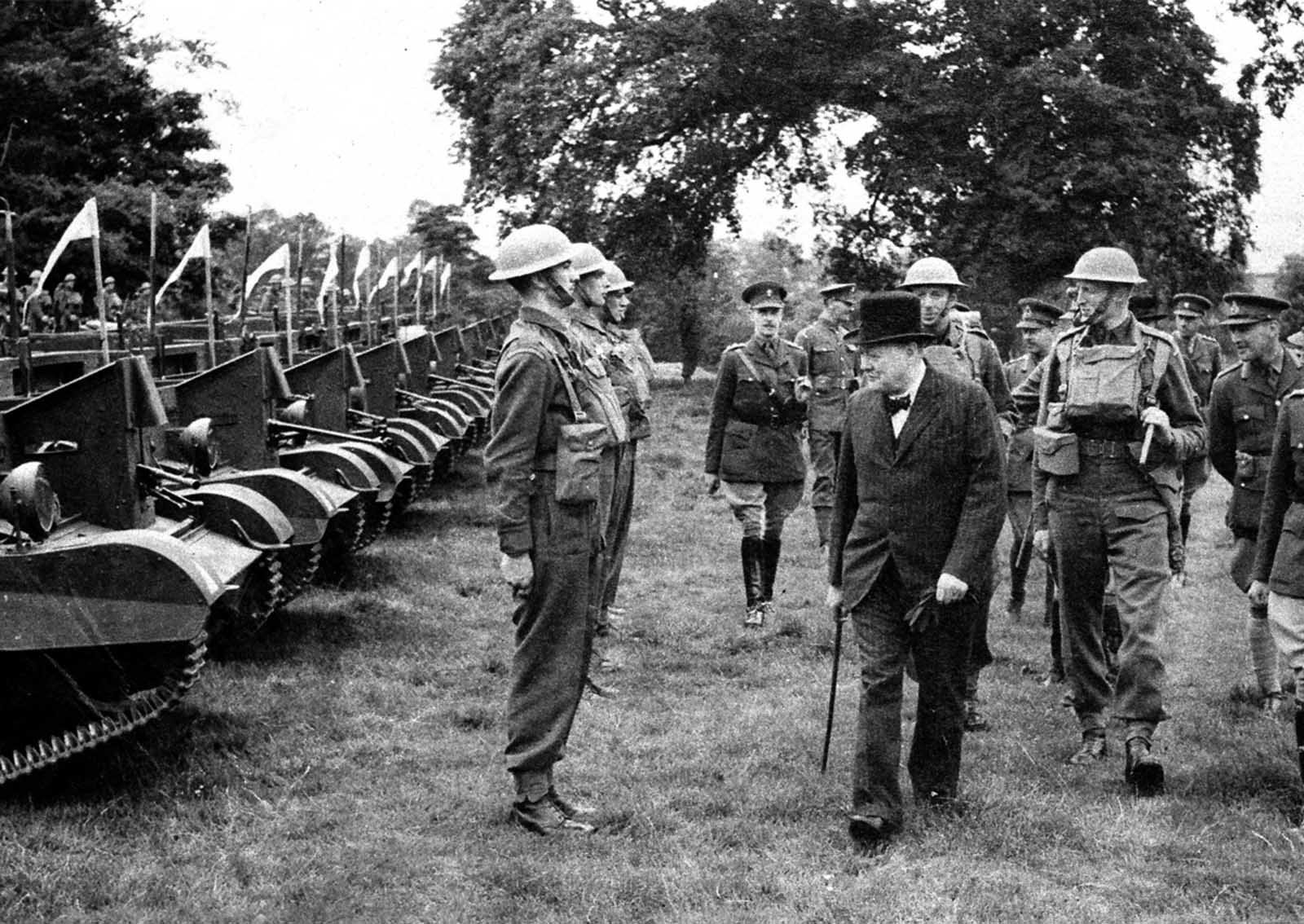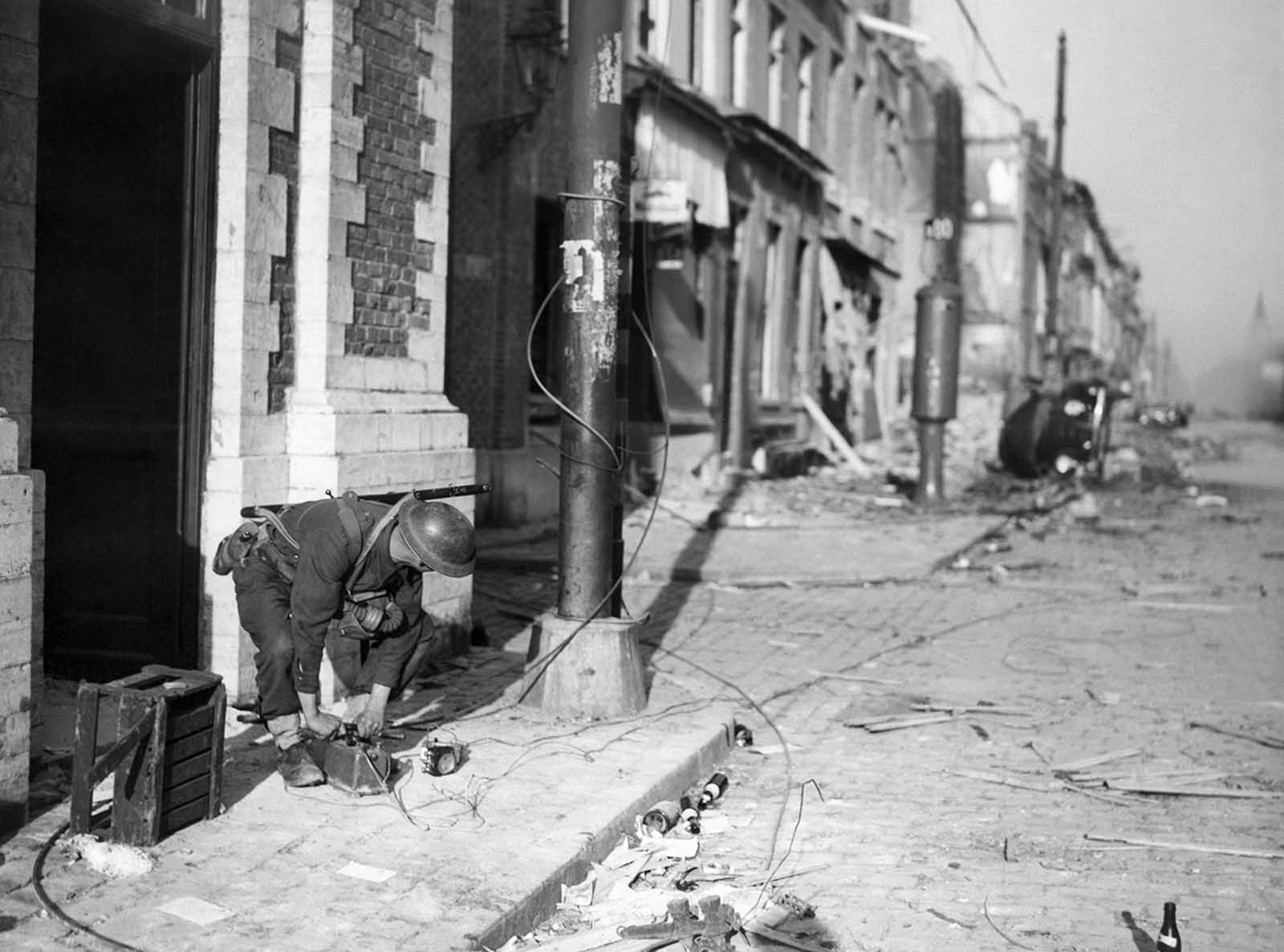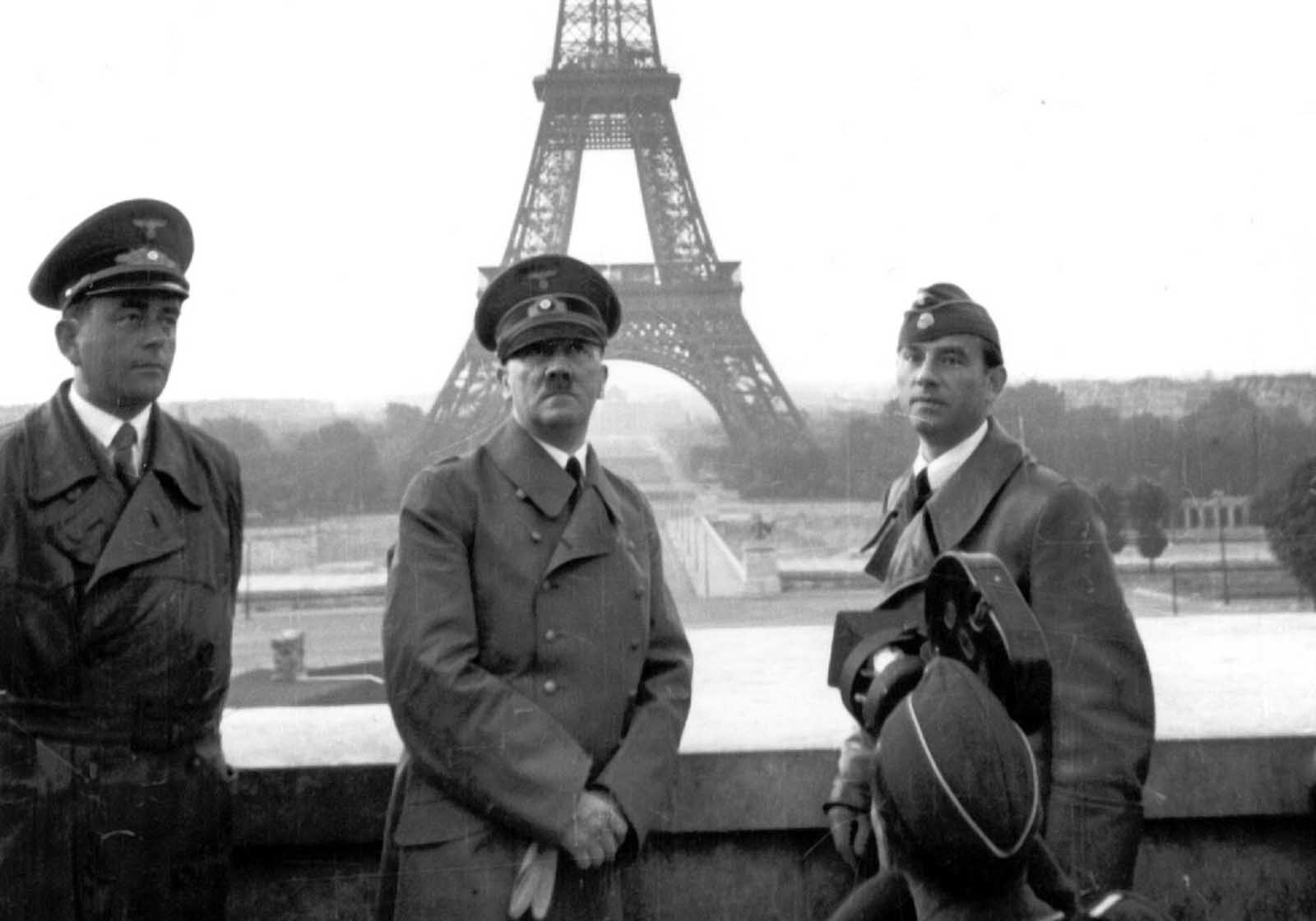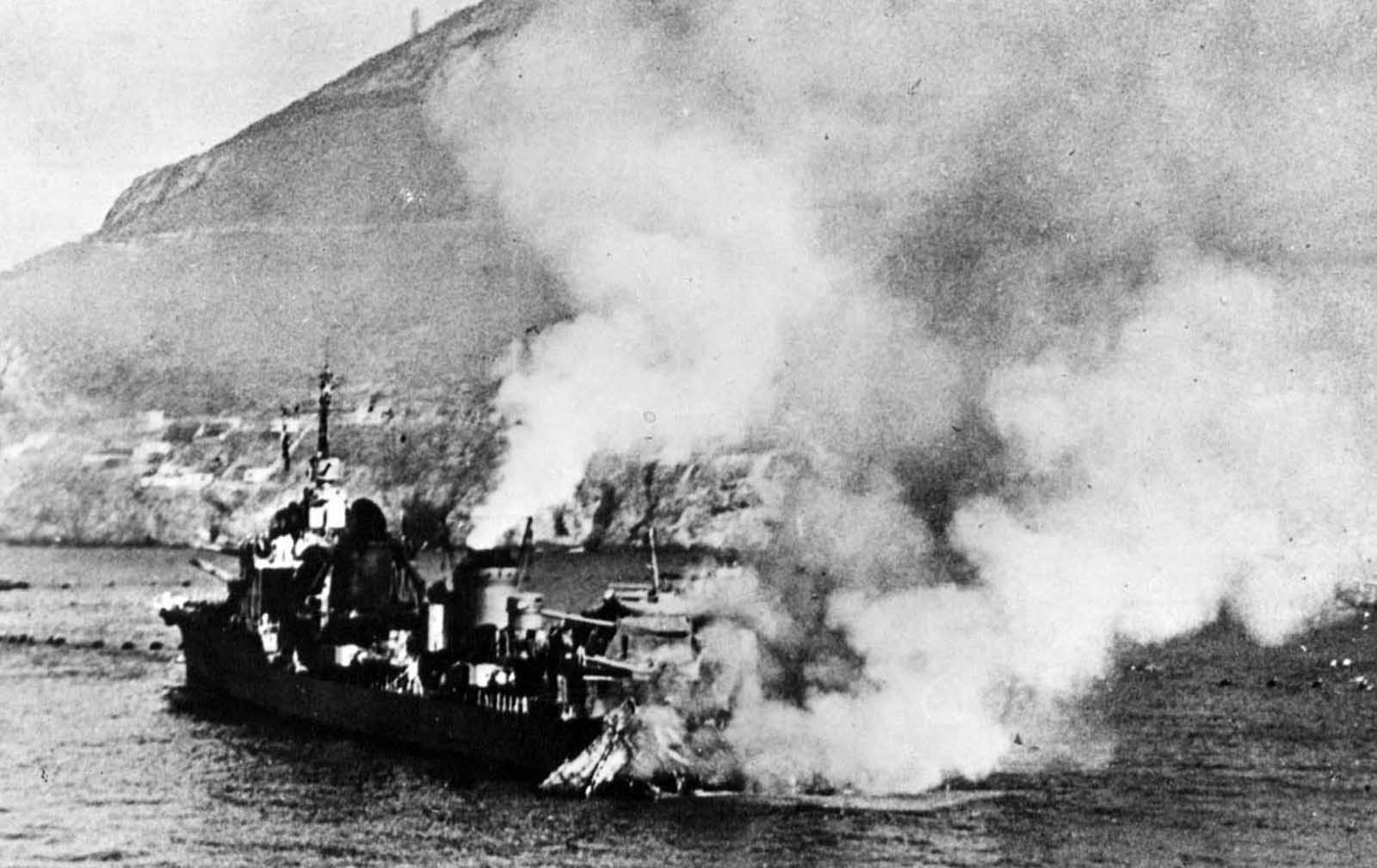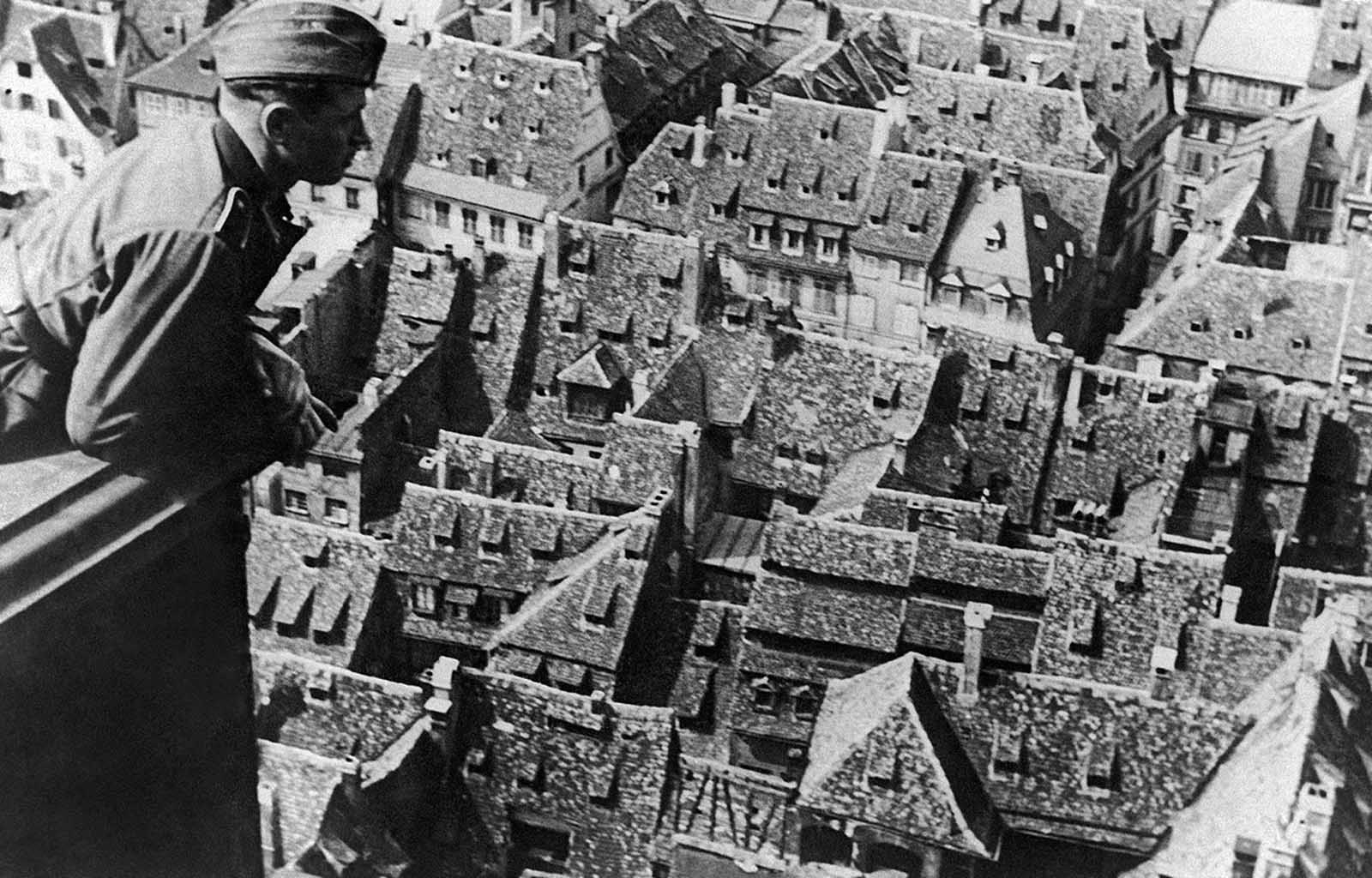At the same time, Nazi warships and troops were entering Norwegian waters, attacking ships, landing troops, and starting a conflict that would last for two months. The western European invasion began at 2:30am on May 10th, involving infantry crossing into Holland and Belgium and joined by German paratroopers taking the Belgian fort at Eben-Emael and its 2,000-strong garrison with the loss of just six German paratroopers. Other key paradrops netted strategic bridges and villages that would allow passage of German armor. Paratroopers also landed in Rotterdam and The Hague under complete surprise. The Dutch and Belgians did their best to resist but their plans were badly dislocated by the loss of the border fortifications, which they were expecting to buy time for their troops to deploy. While the Allies were distracted by the attacks in the Low Countries, the bulk of the German armored divisions were racing through the Ardennes almost unopposed, reaching the Meuse River on 12 May. The French reserve divisions barely slowed the German thrust, and by 15 May the Germans had a large bridgehead across the river. A day later the German spearhead was through the French defenses and far behind the Allied front line. The German tanks reached the coast at the mouth of the Somme River on 20 September, cutting the British and French armies off from their supplies. Marching on half rations, the British and French fell back, mounting a fighting withdrawal as they tried to close their wide-open flank. Sporadic attempts to re-establish contact with the rest of the French Army failed, leaving evacuation the only alternative. Between 27 May and 4 June, the Royal Navy evacuated 200,000 British troops and 140,000 Belgian and French troops from Dunkirk, leaving 30,000 French behind holding the beachhead to the end. On 22 Jun 1940, General Pretelat surrendered the French Second Army Group, marking the end of the battle. The government of France formally surrendered three days later in the same railroad car at Compiègne that Germany had surrendered in at the conclusion of WW1 in 1918. The French attempted to drag out the surrender negotiations by trying for more favorable terms, and they tried the patience of German leaders. Finally, at 5pm that day, Keitel communicated an ultimatum that the French must surrender by 6pm, otherwise, he would give the order to continue the attack on the rest of France. The French surrendered a few minutes after 1800. To many German military leaders, the victory spelled an act of satisfying revenge for the defeat in WW1 and the shame that resulted from the post-WW1 sanctions. “I had a feeling that this was our hour of revenge for Versailles, and I was conscious of my pride in the conclusion of a unique and victorious campaign, and of a resolve to respect the feelings of those who had been honorably vanquished in battle”, said Keitel. “That day was the climax of my career as a soldier”. French Prime Minister Paul Reynaud, who refused to surrender, resigned and was replaced by collaborationist Philippe Pétain. France was divided into a German occupation zone in the north and the German-sponsored Vichy government in the south. In London, de Gaulle announced his refusal to recognize the Vichy government, and instead established a new French government dubbed the Free French in London. At the end of the campaign, the Germans suffered 156,000 casualties (27,074 killed) while the Allies lost 2,292,000 casualties or capture. The campaign showed the world that warfare was no longer limited to fortresses and trenches. French troops stood guarding the Maginot Line achieved little while German troops bypassed them with speed. At the time of the surrender, some Maginot Line elements were still at decent strength but surrendered all the same. In little over a month, the German troops had achieved what Germany could not in four years in WW1. Stunningly, while Germany lost 2 million men while unsuccessfully trying to take France in the previous war, this modern German army achieved it with a fraction of the lives lost. (Photo credit: AP Photo /German War Department / US Army Archives). Notify me of new posts by email.
Δ Subscribe
